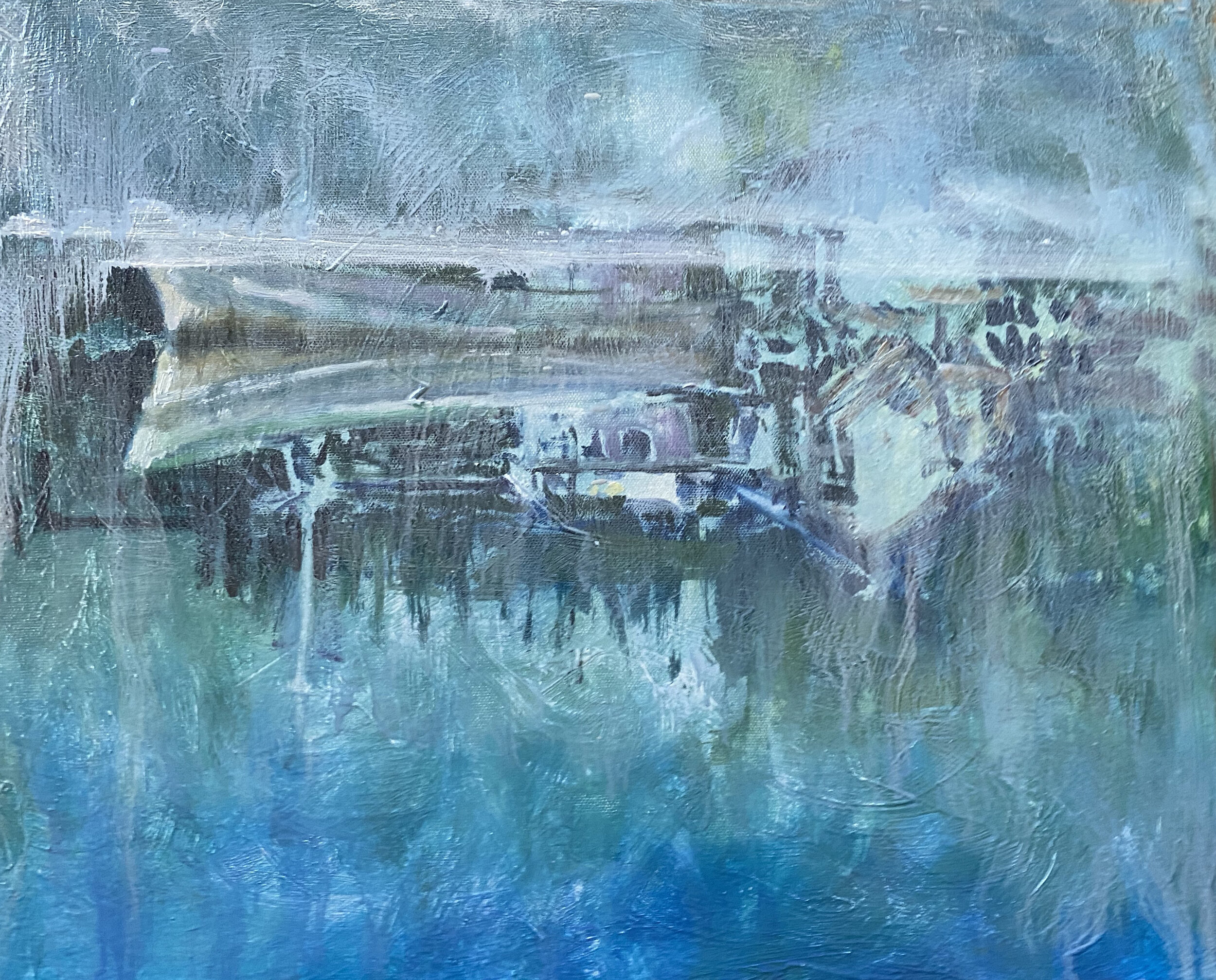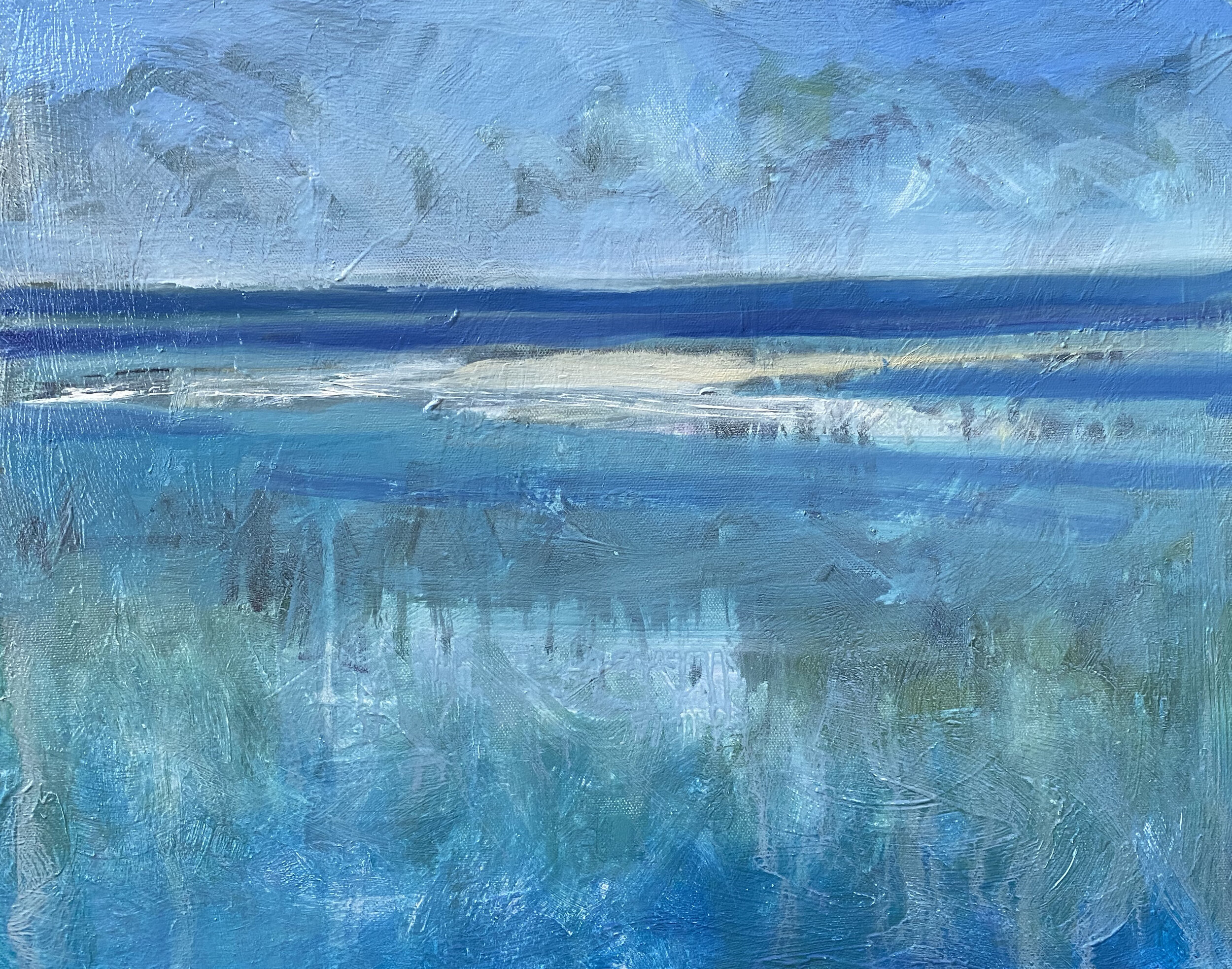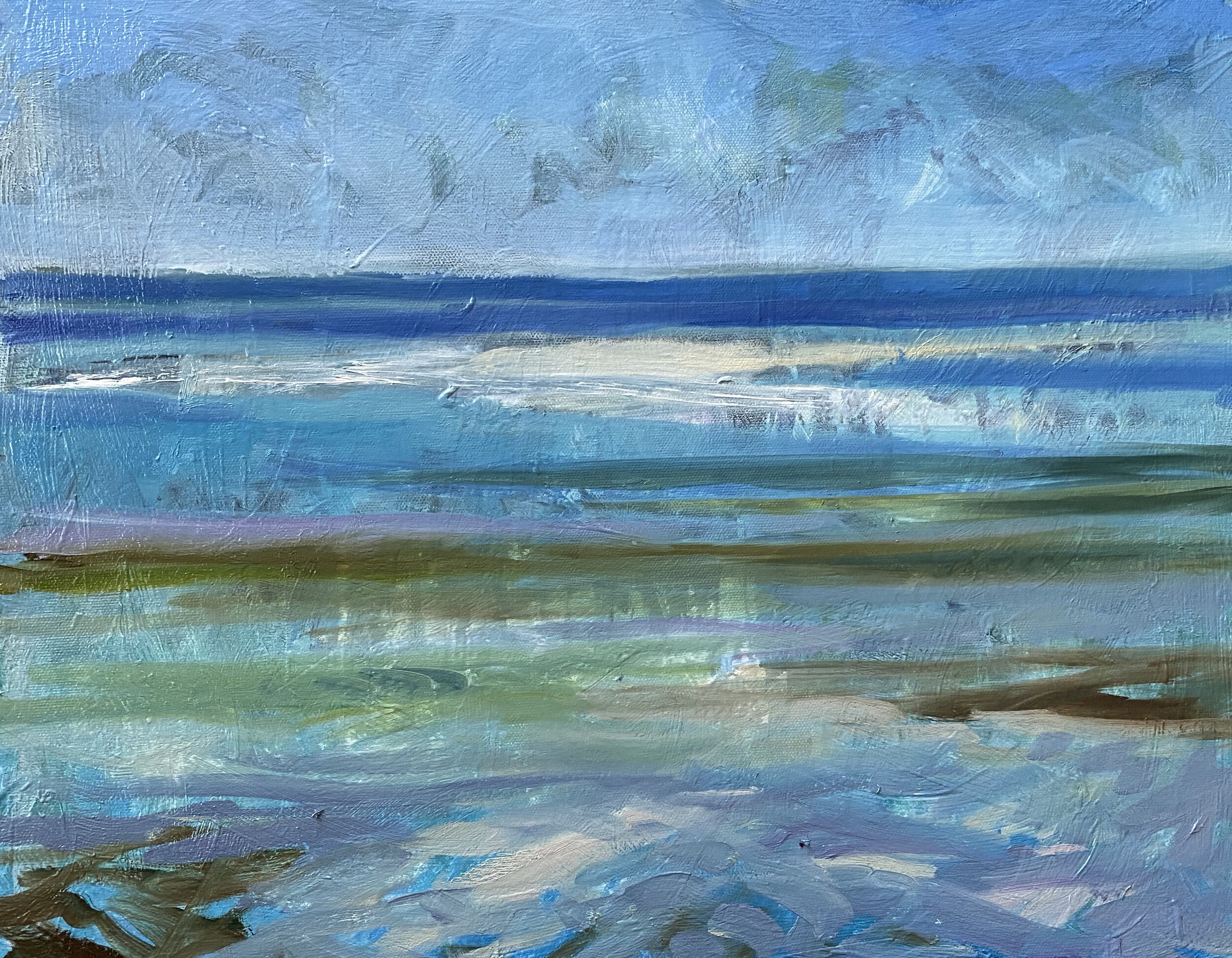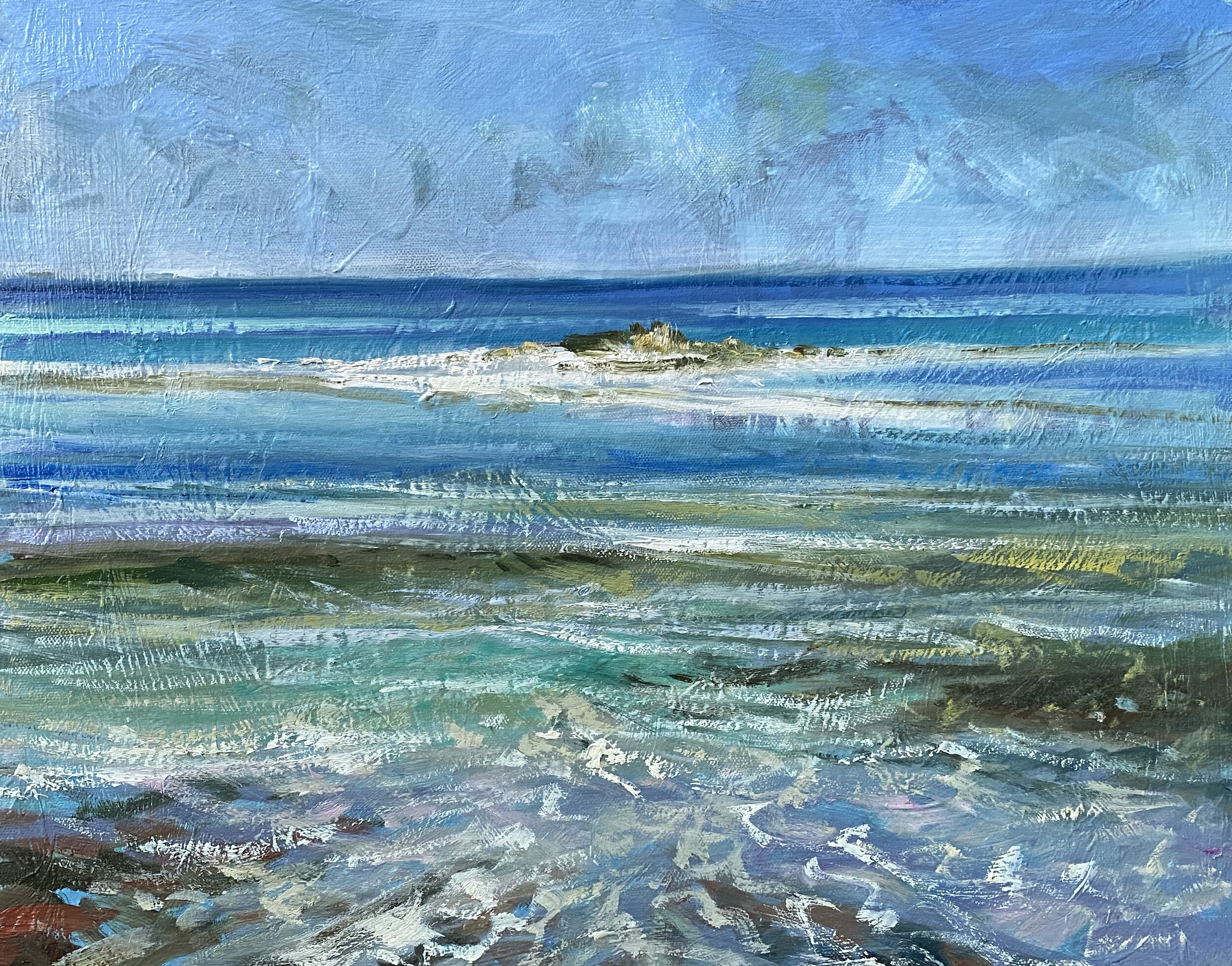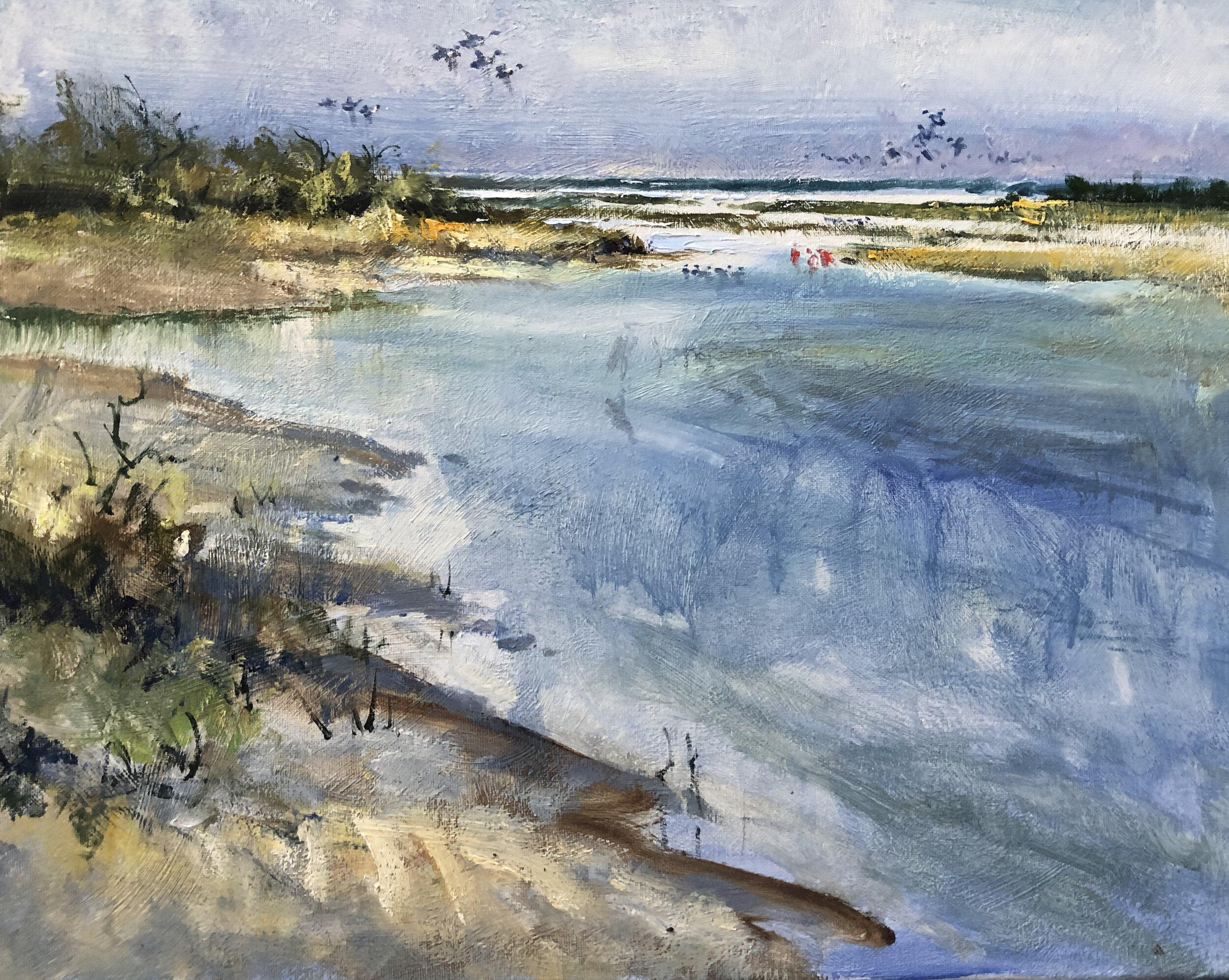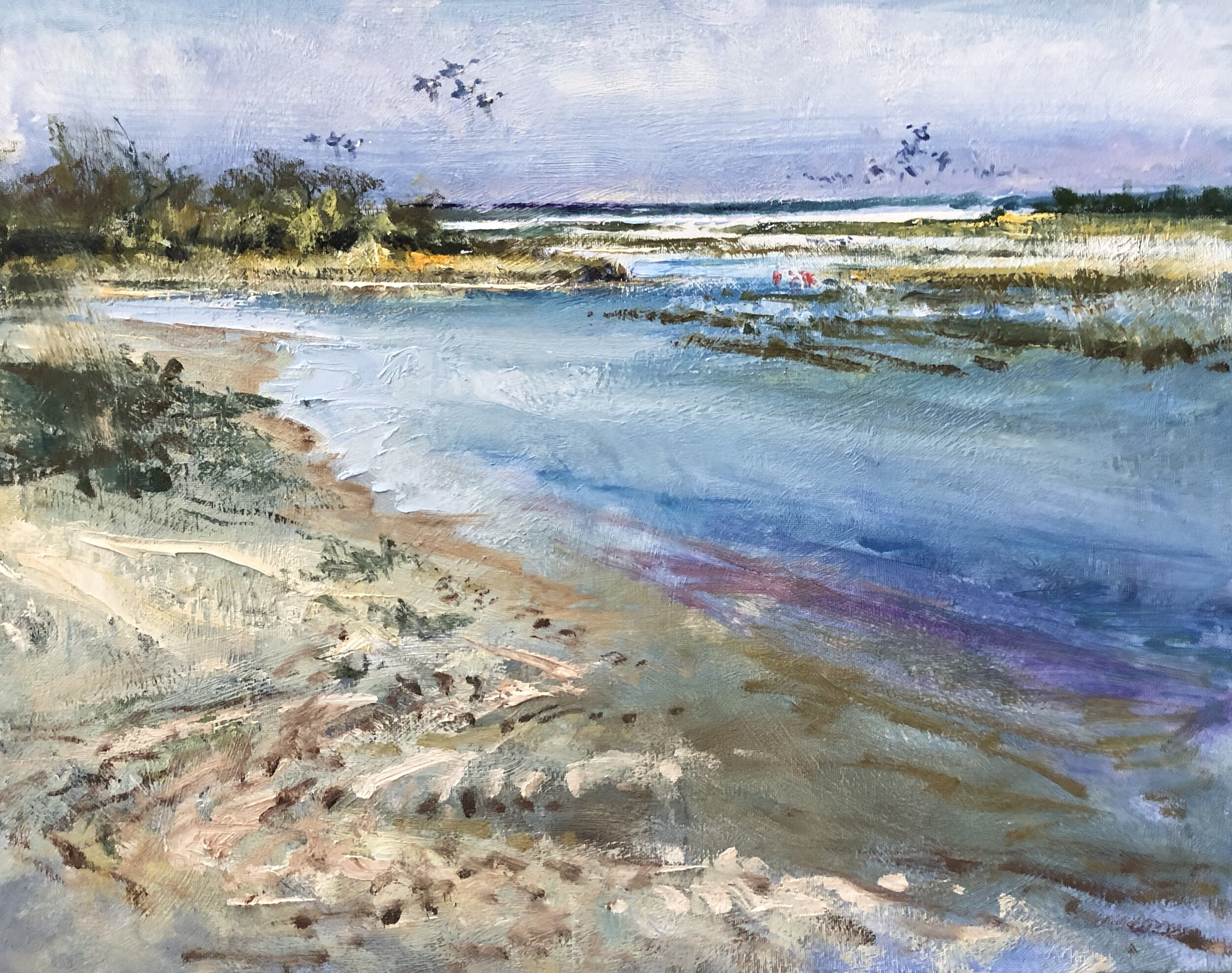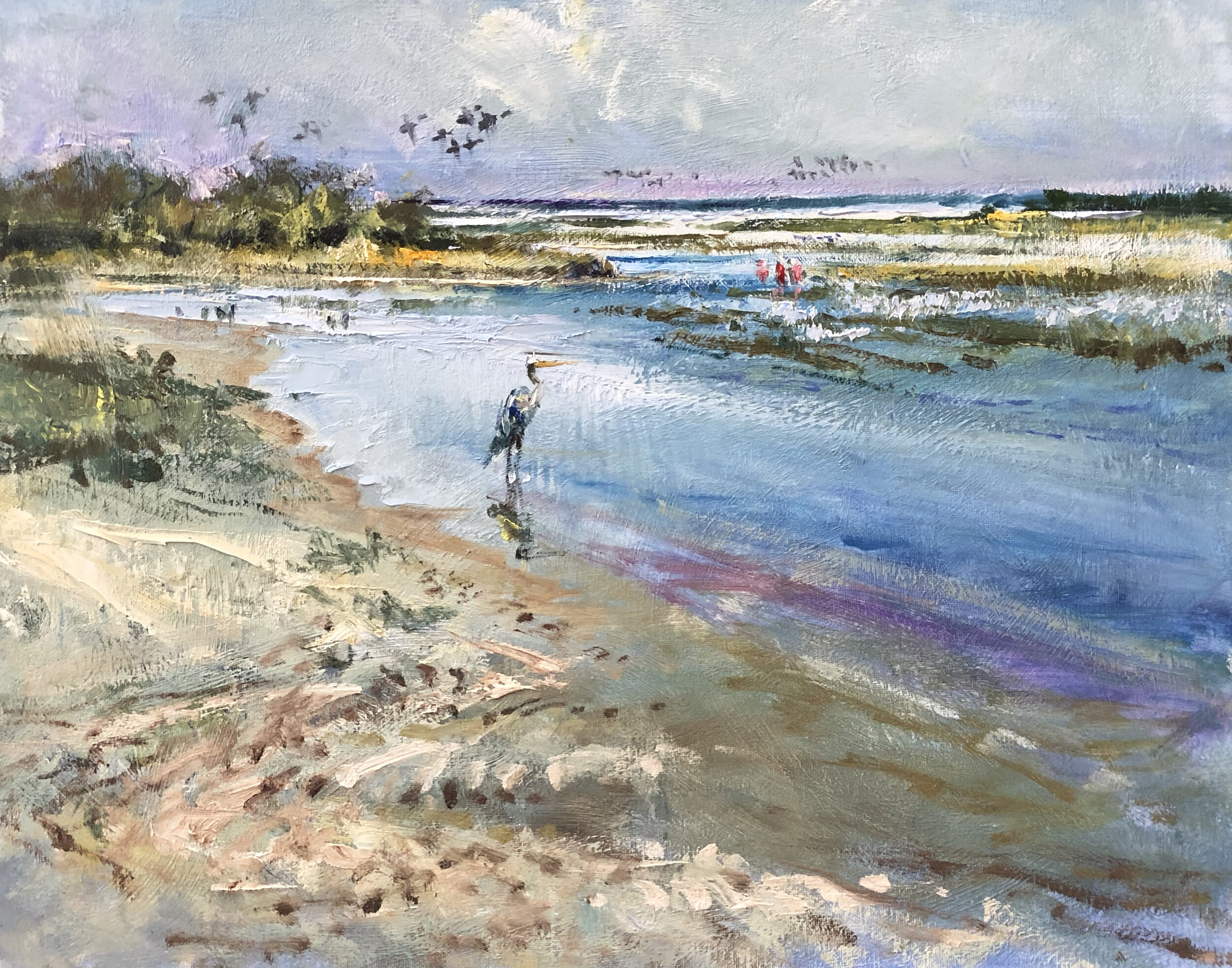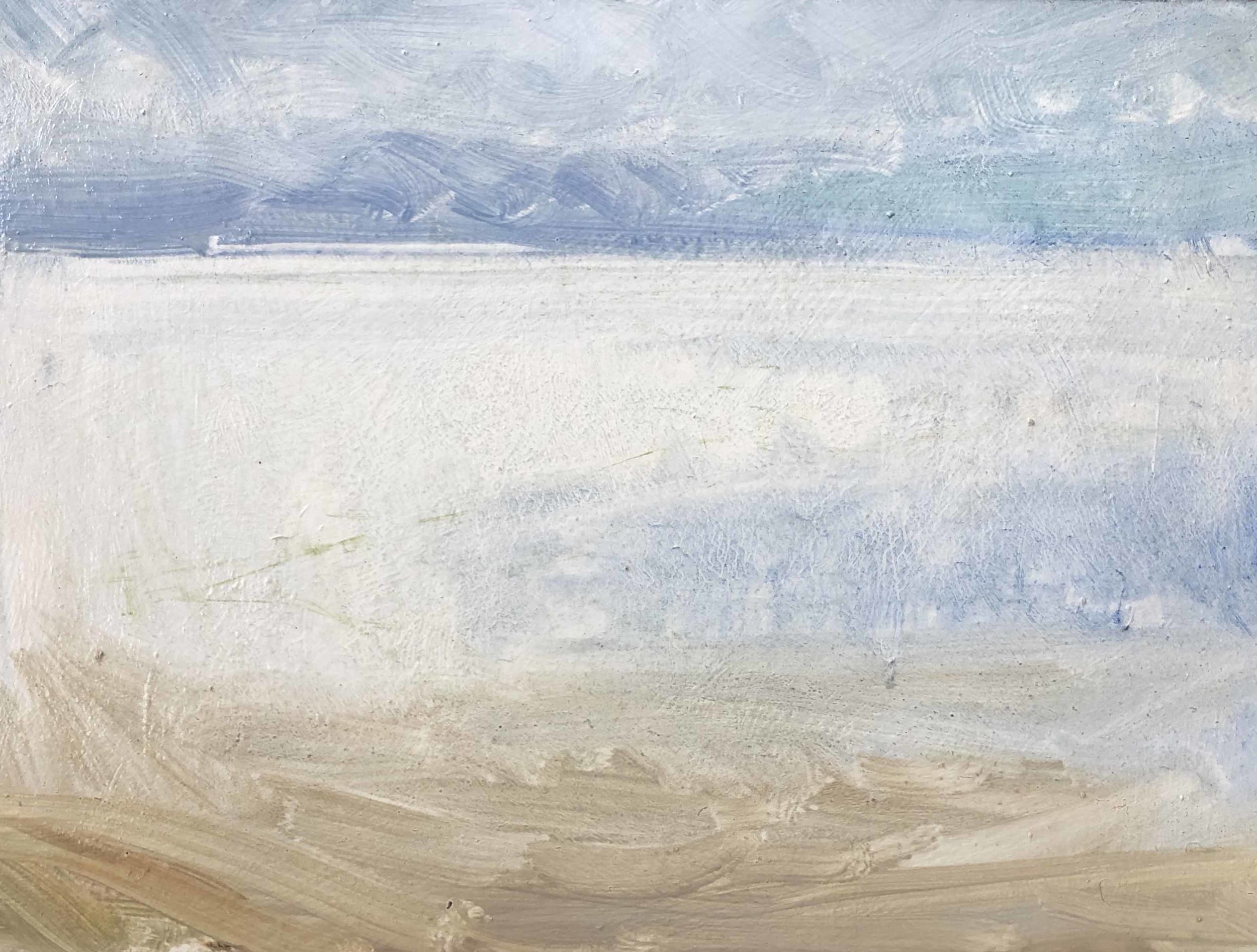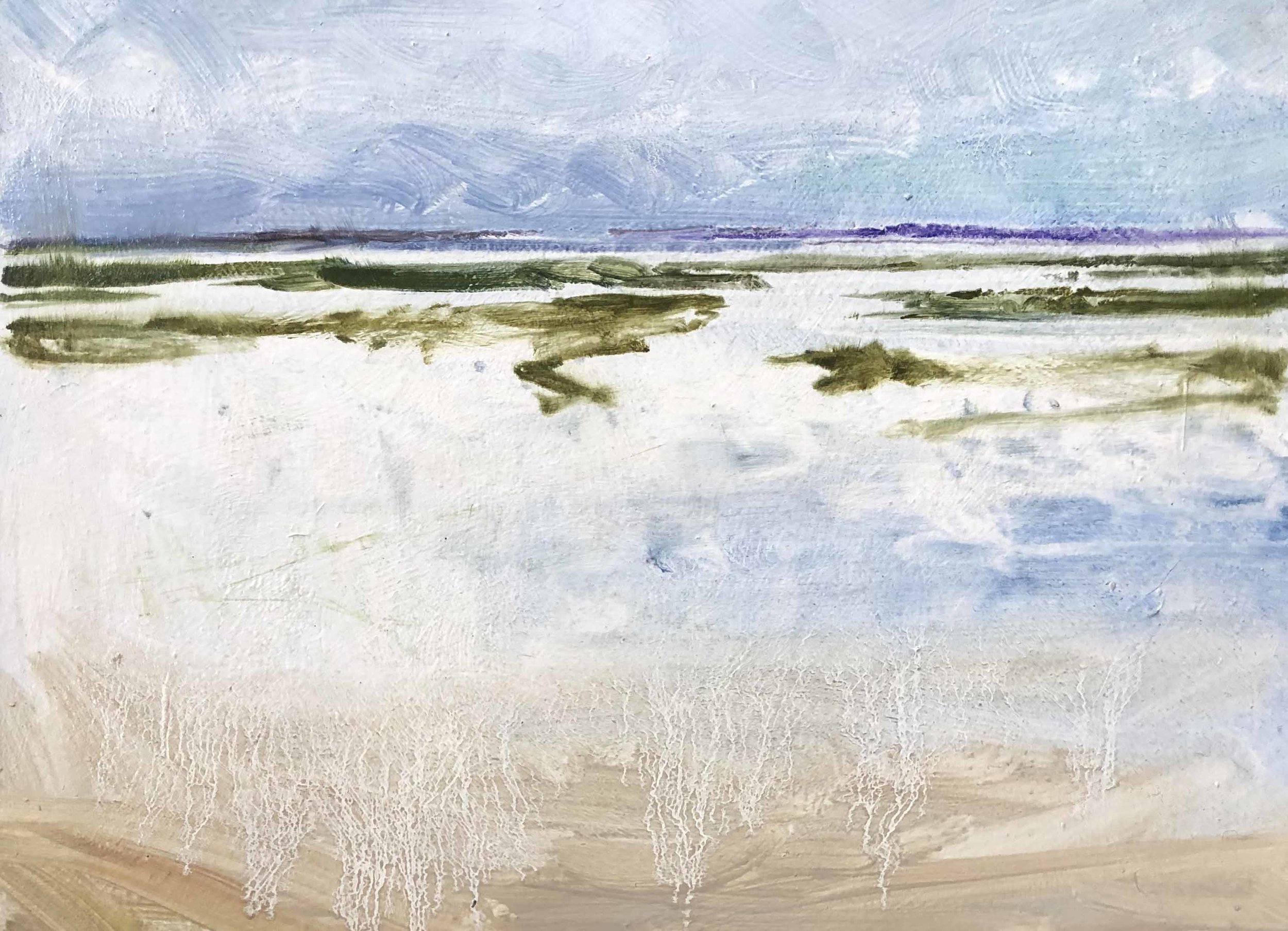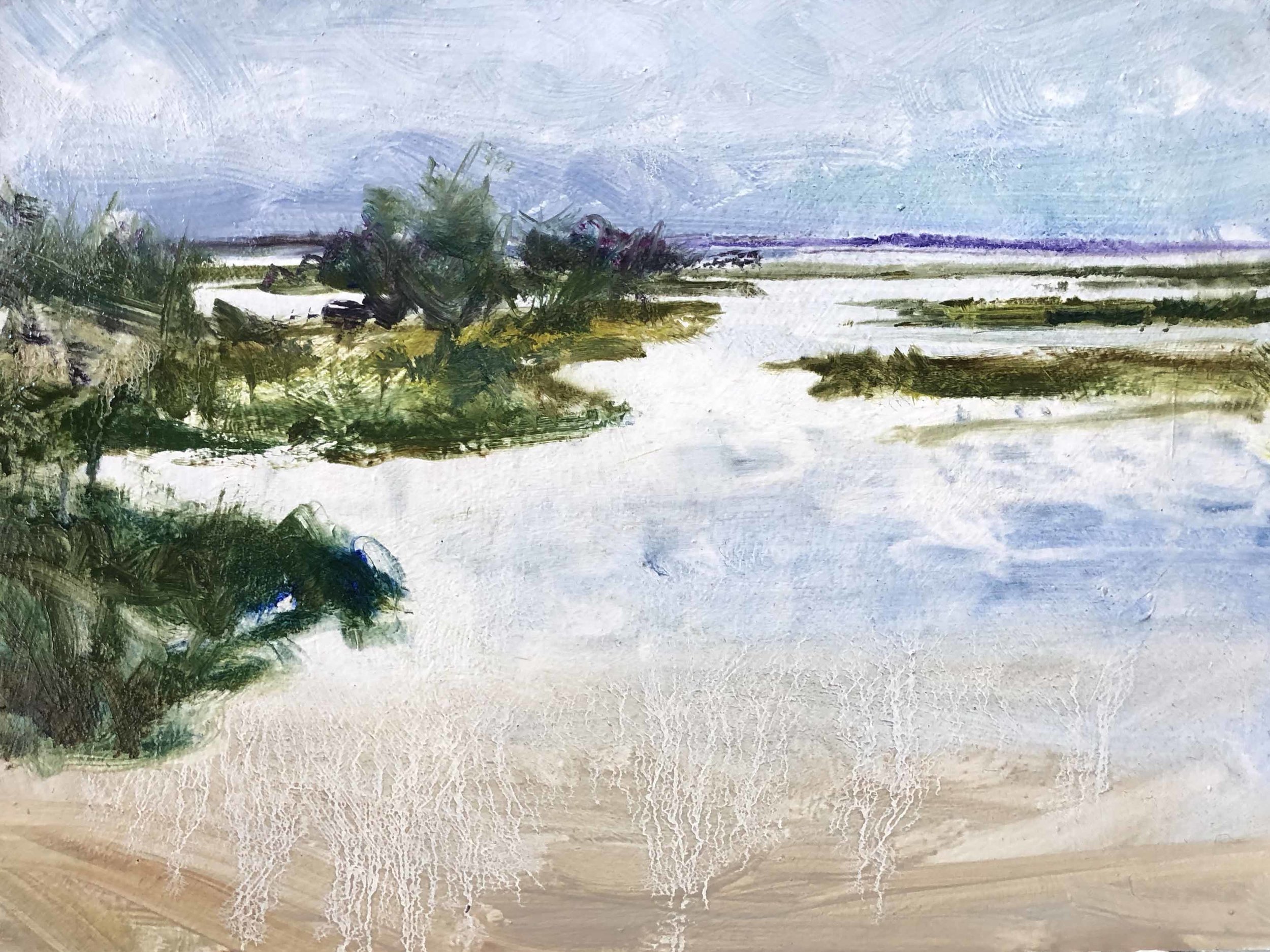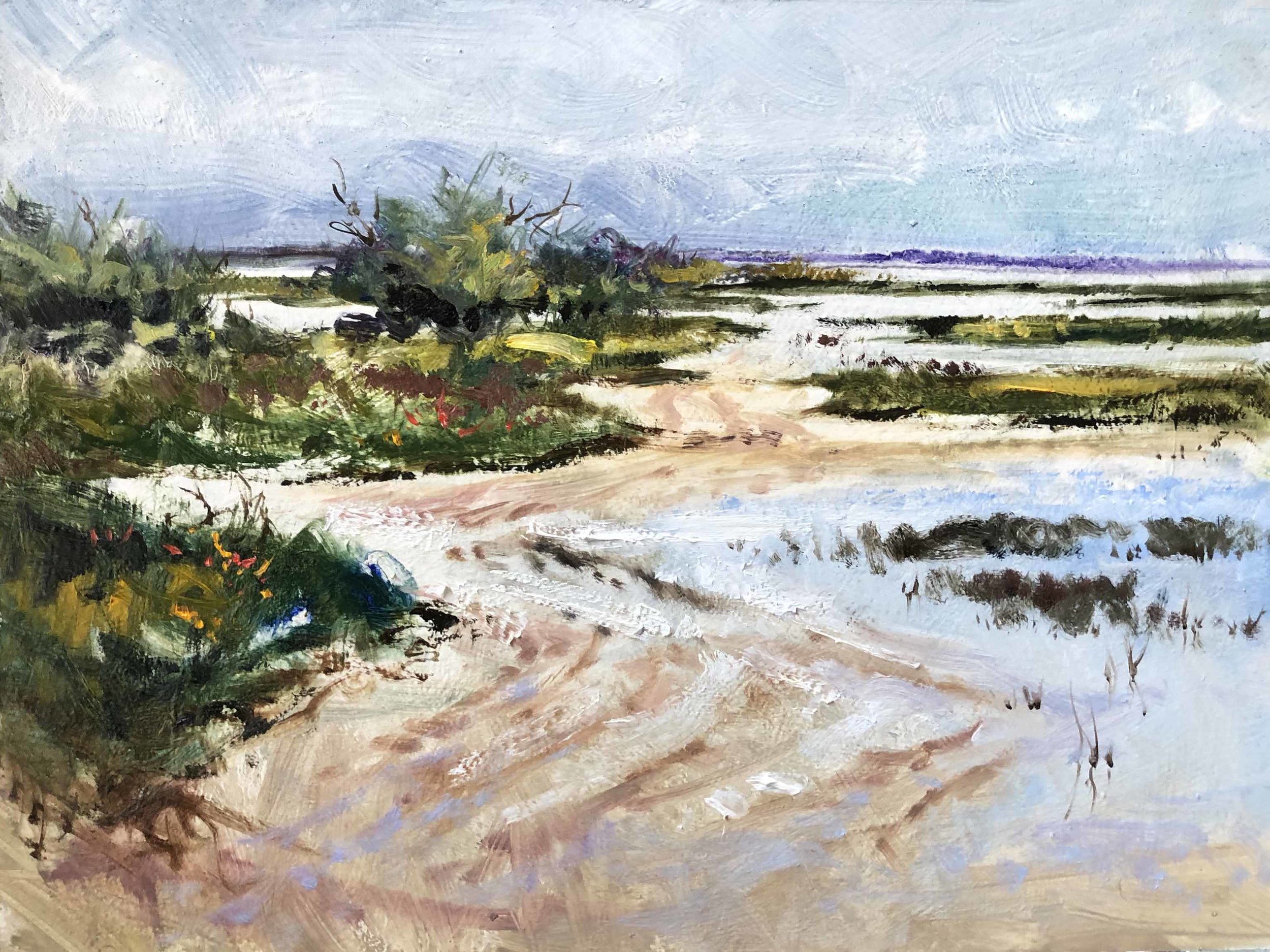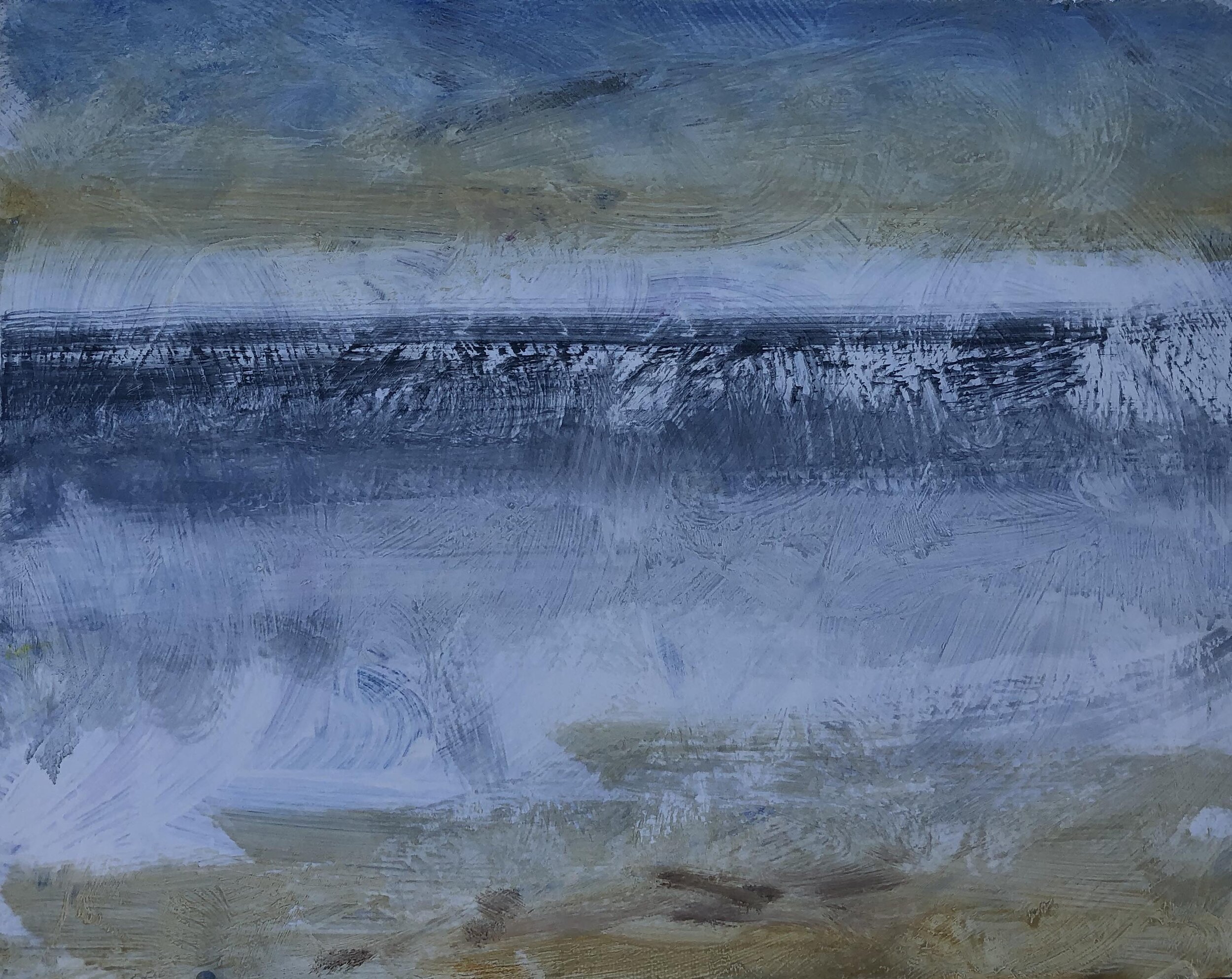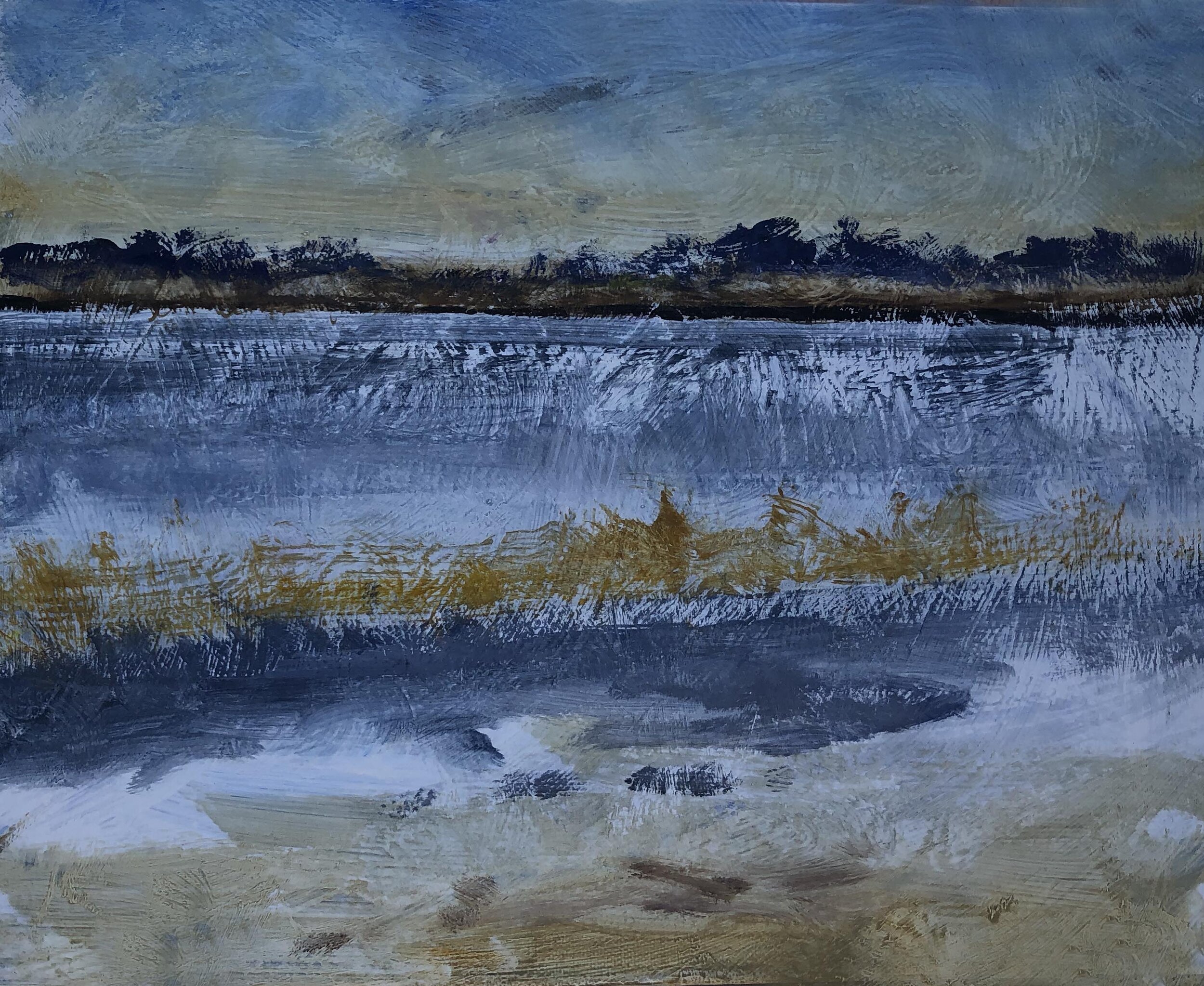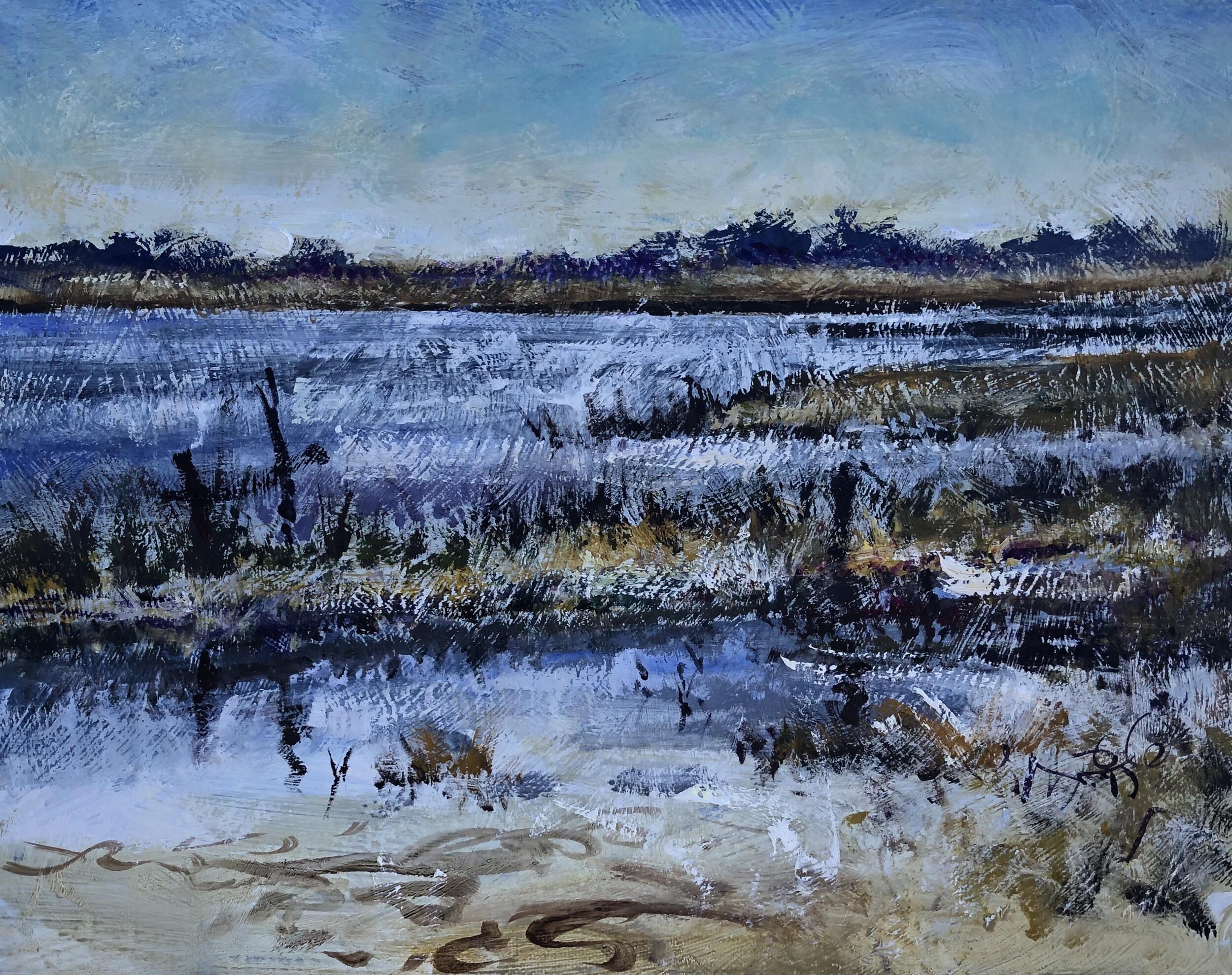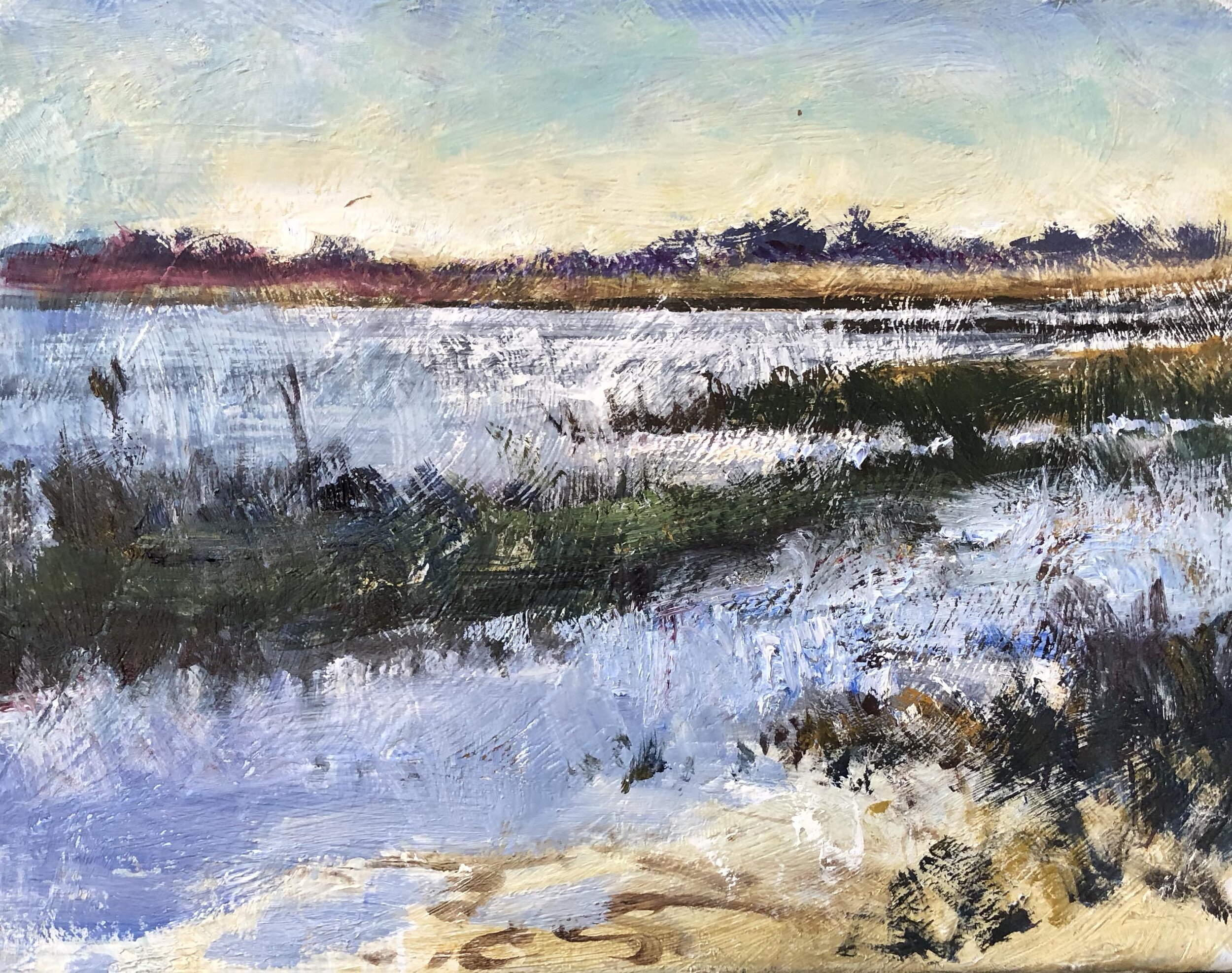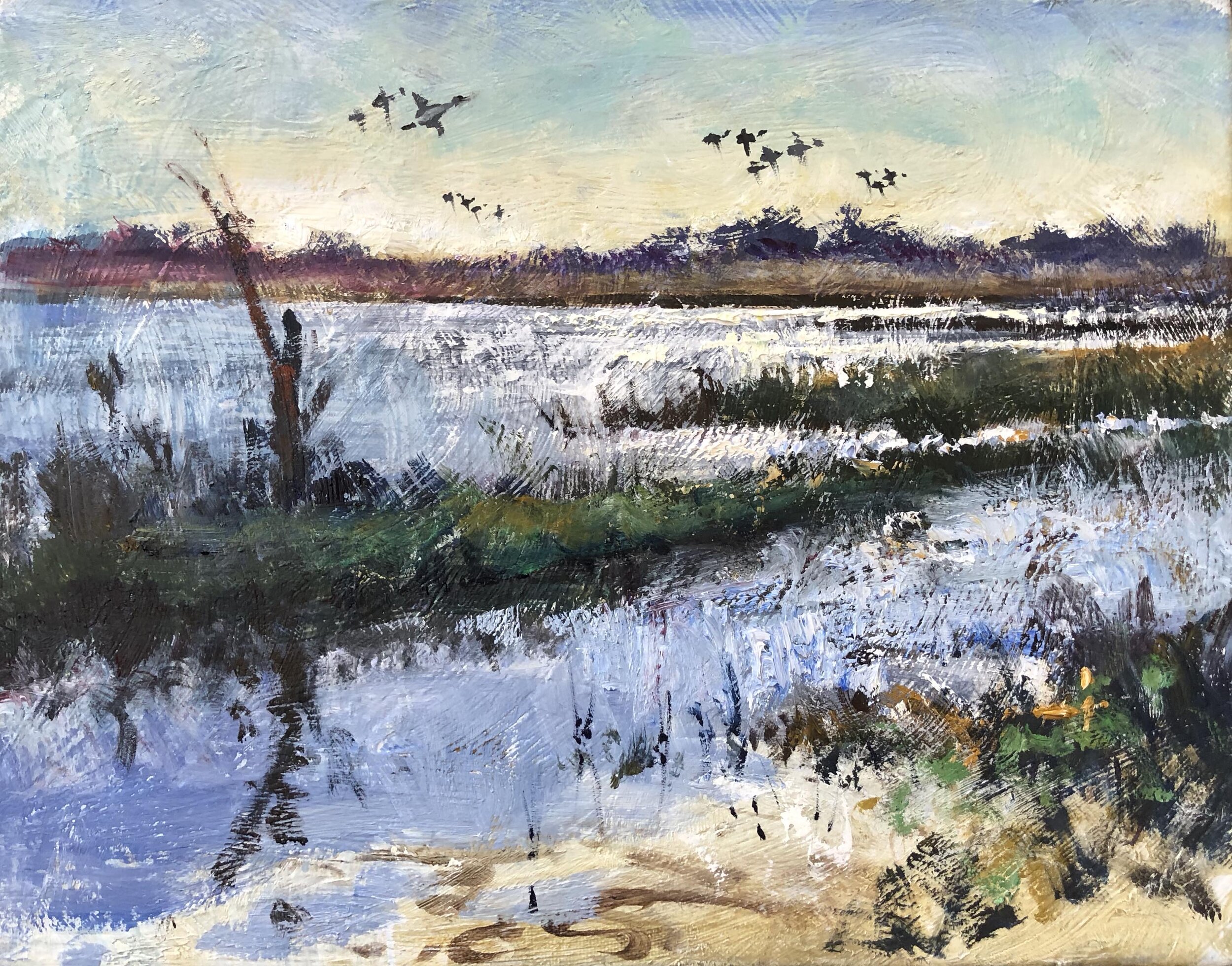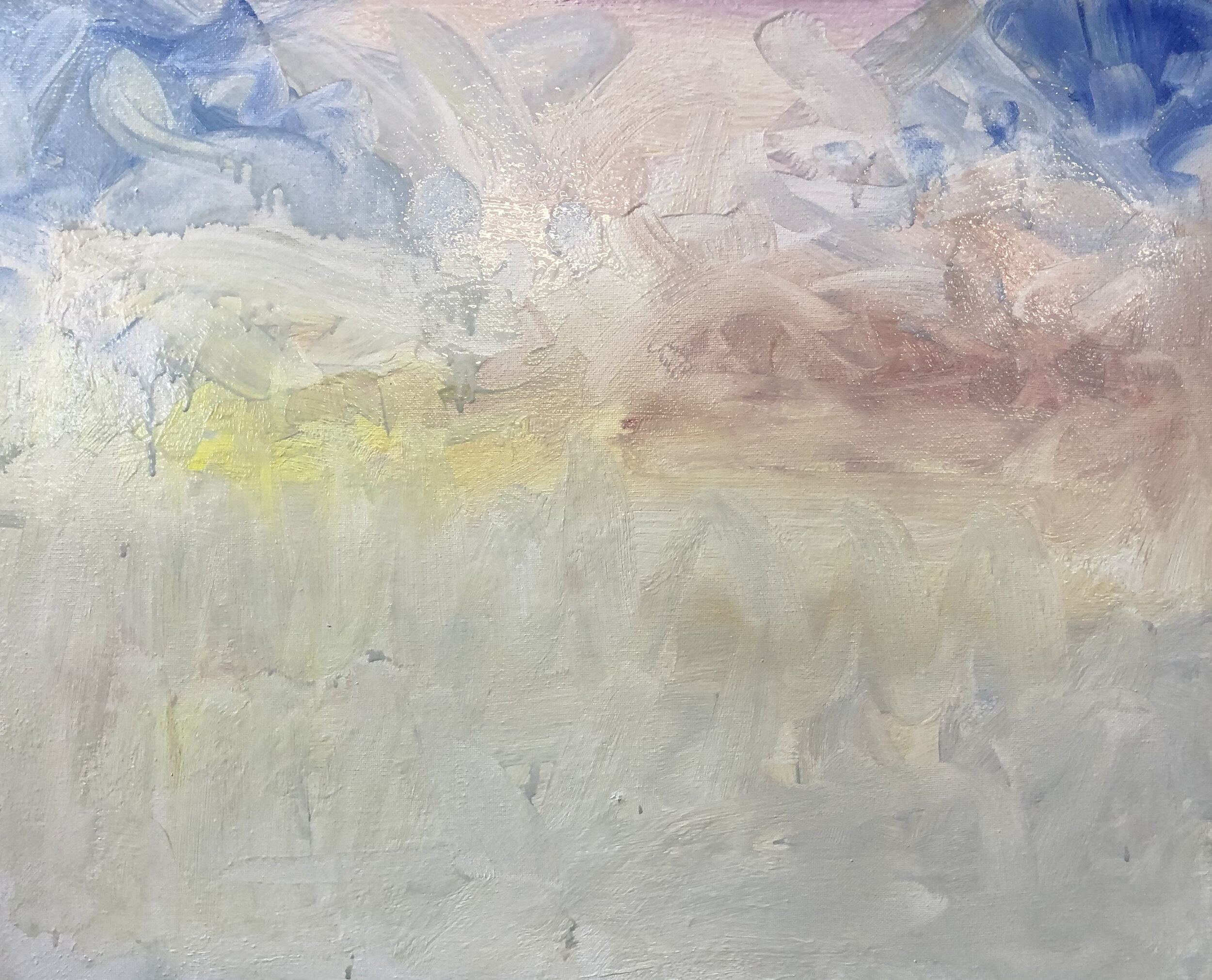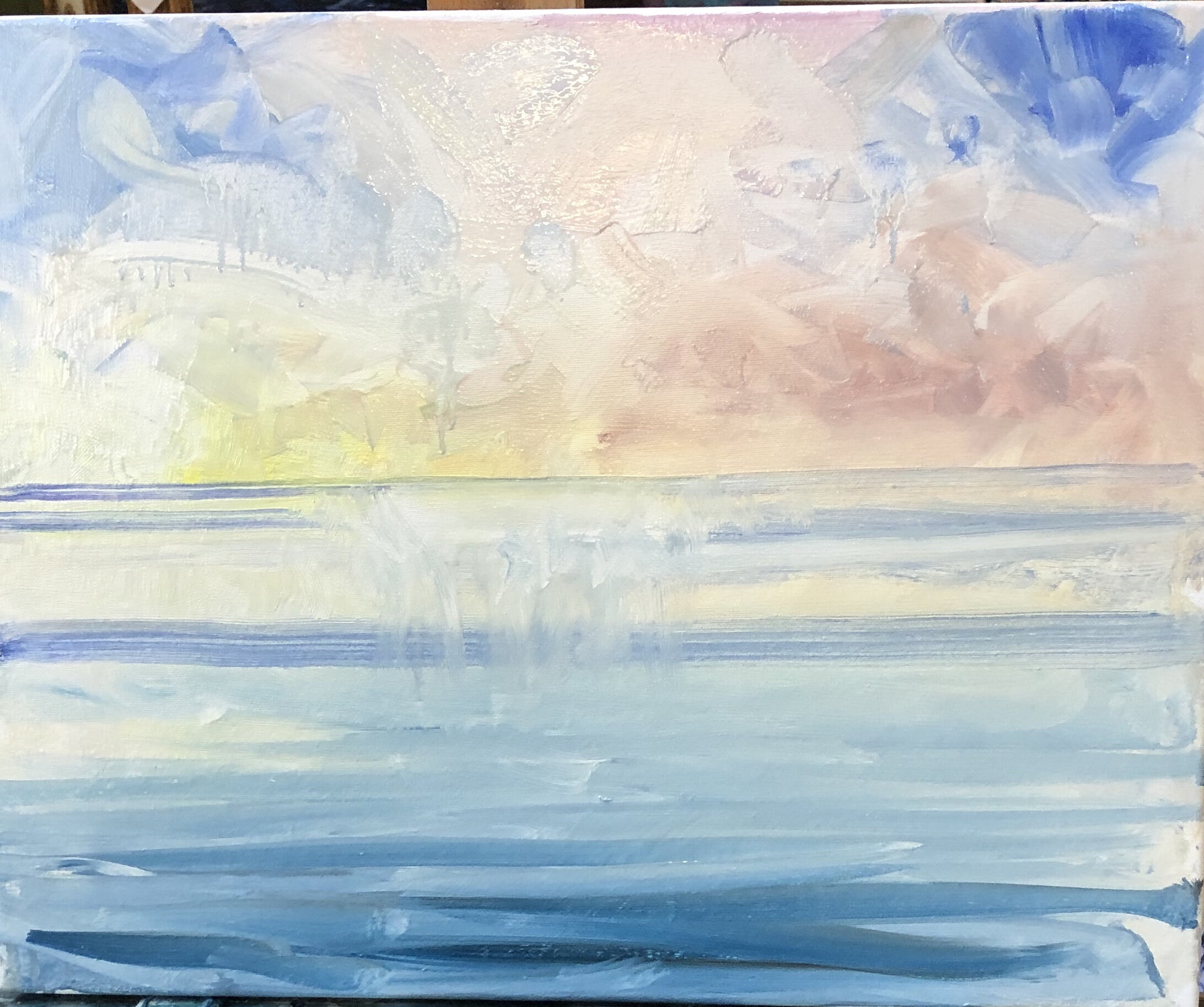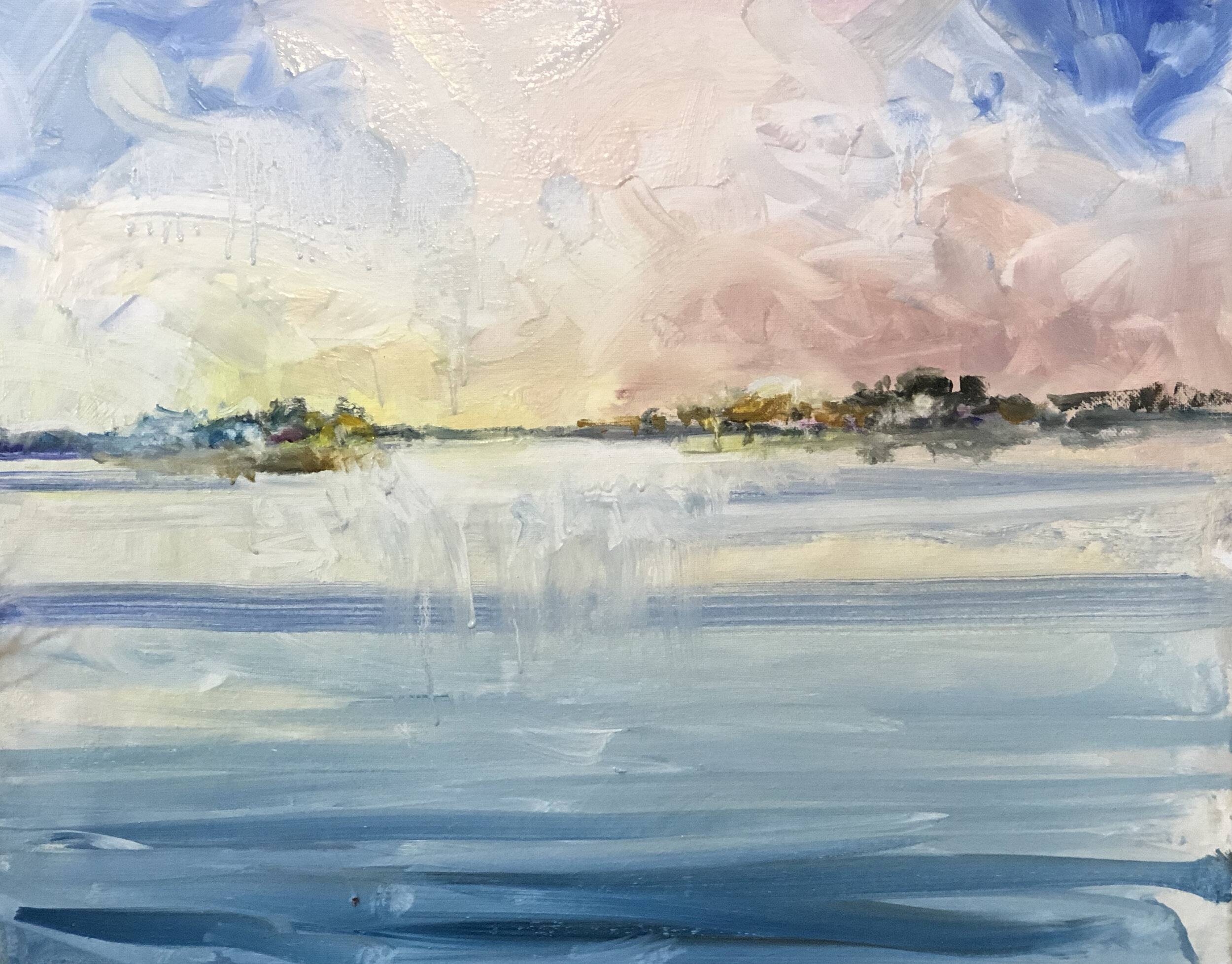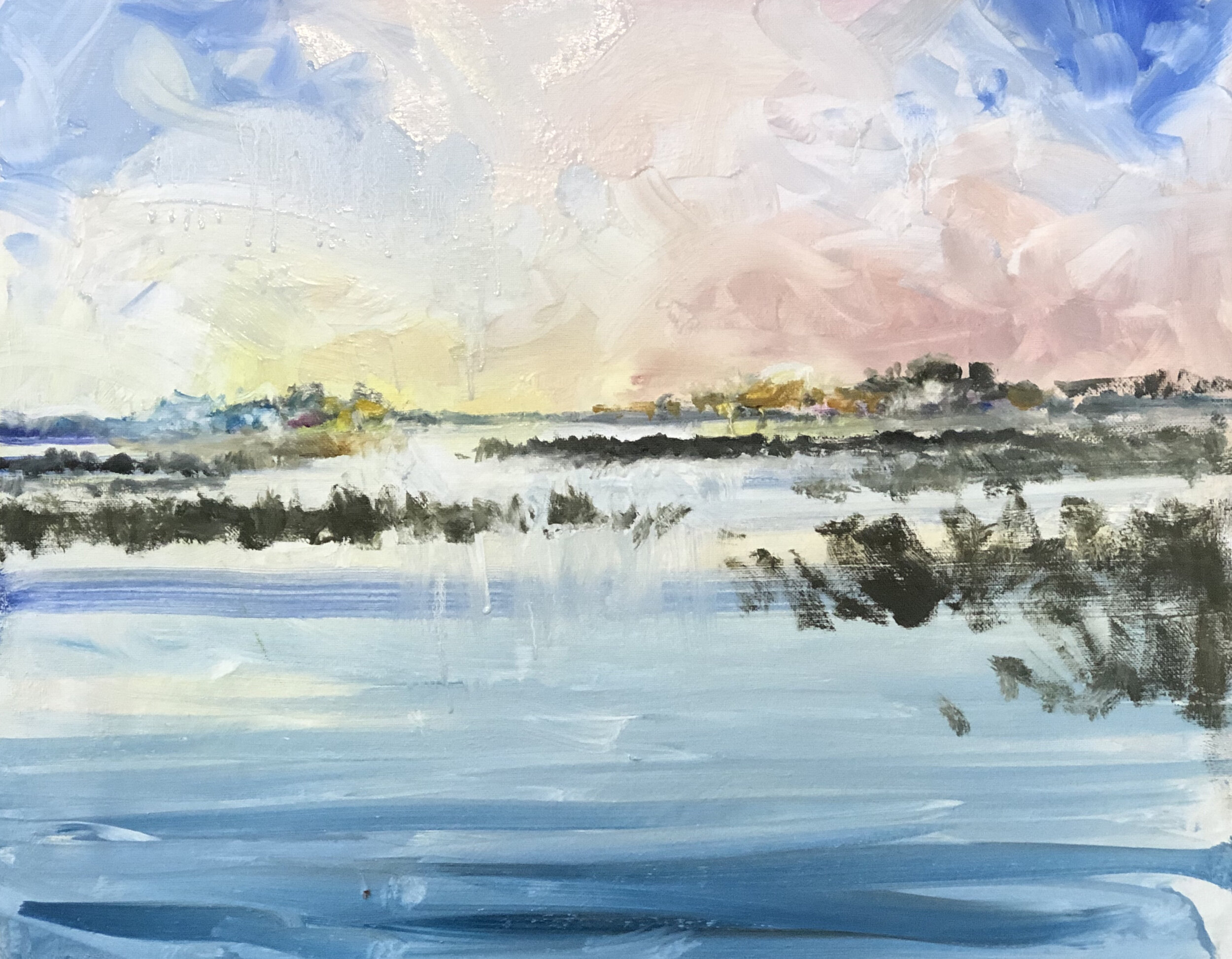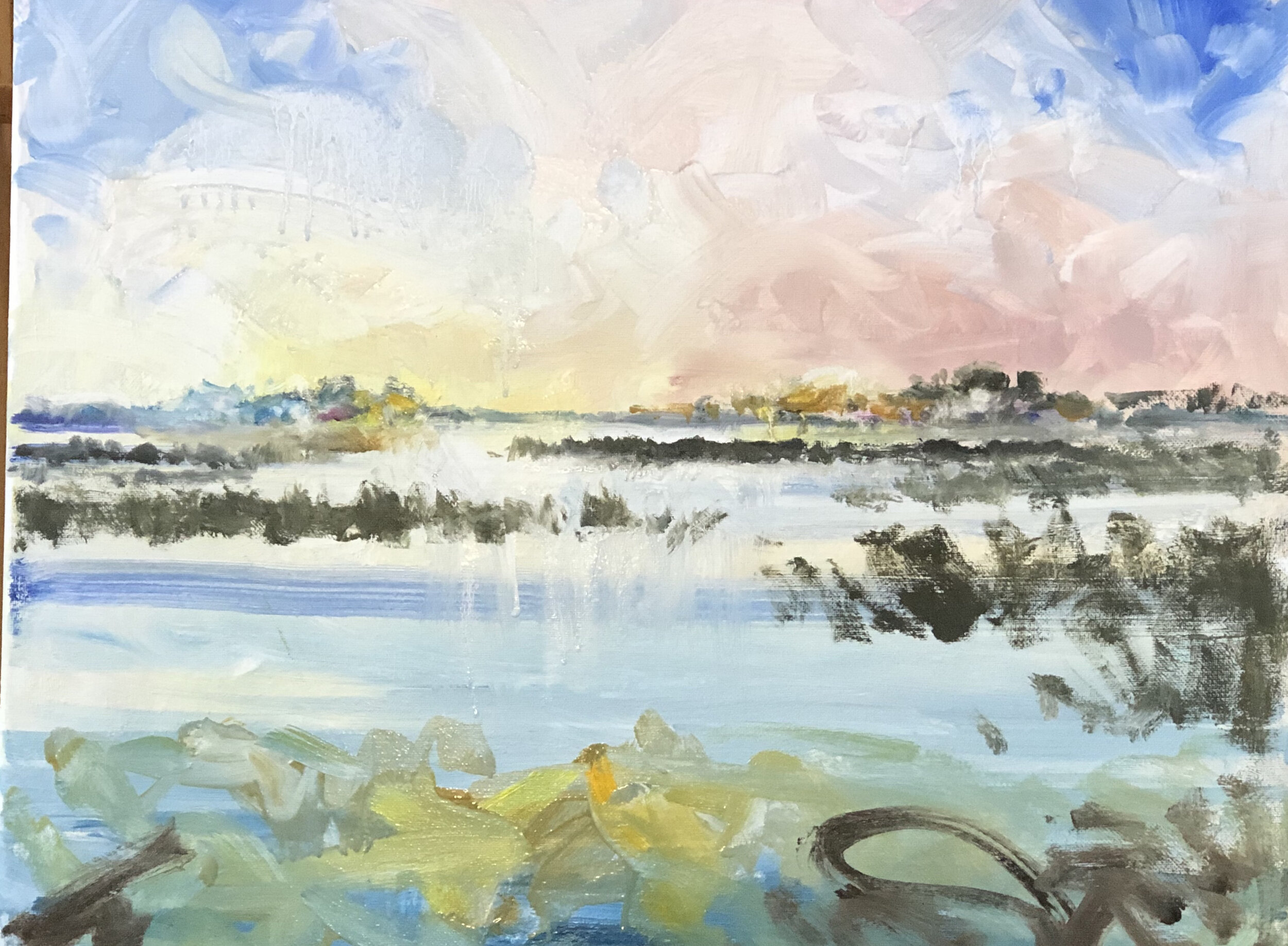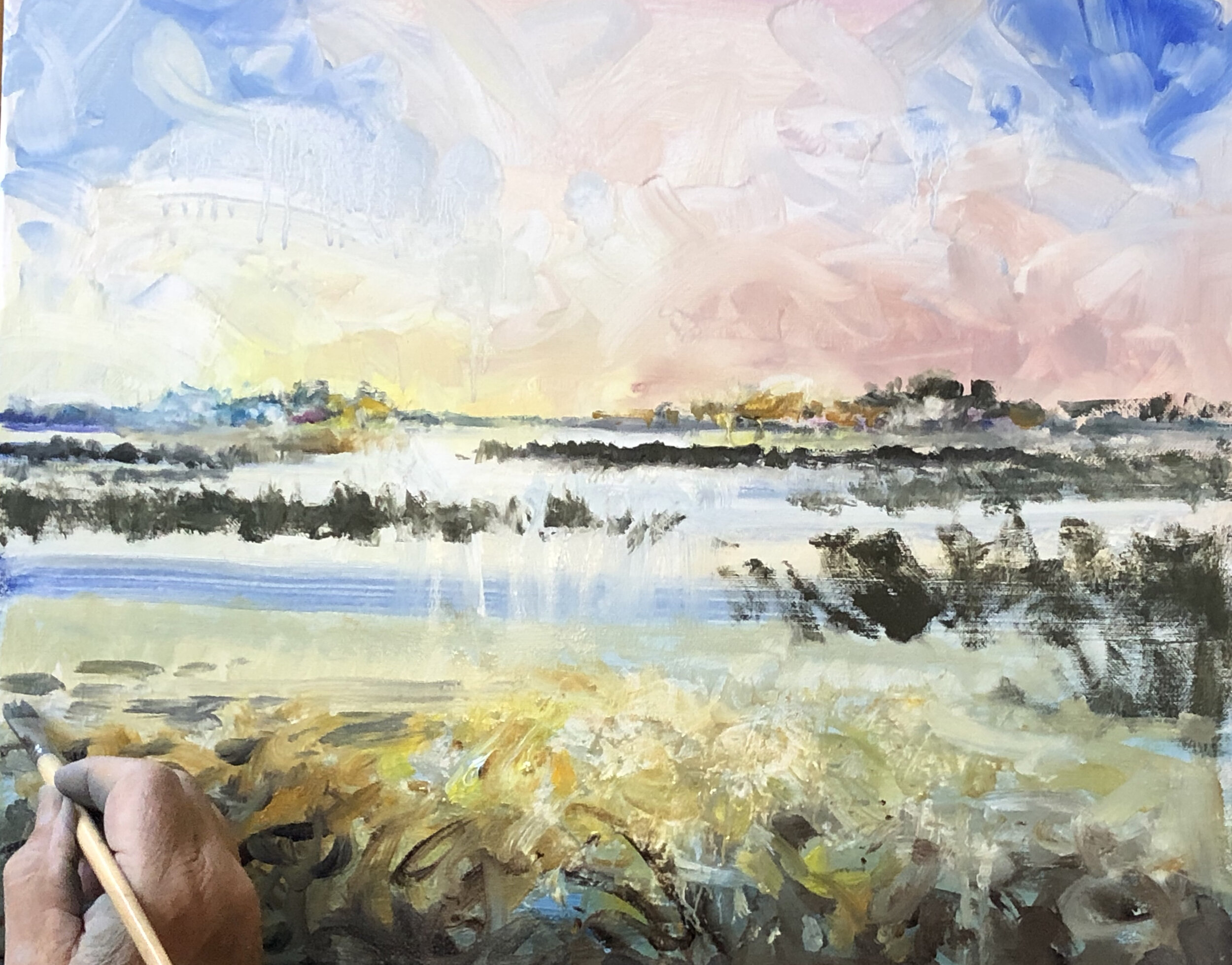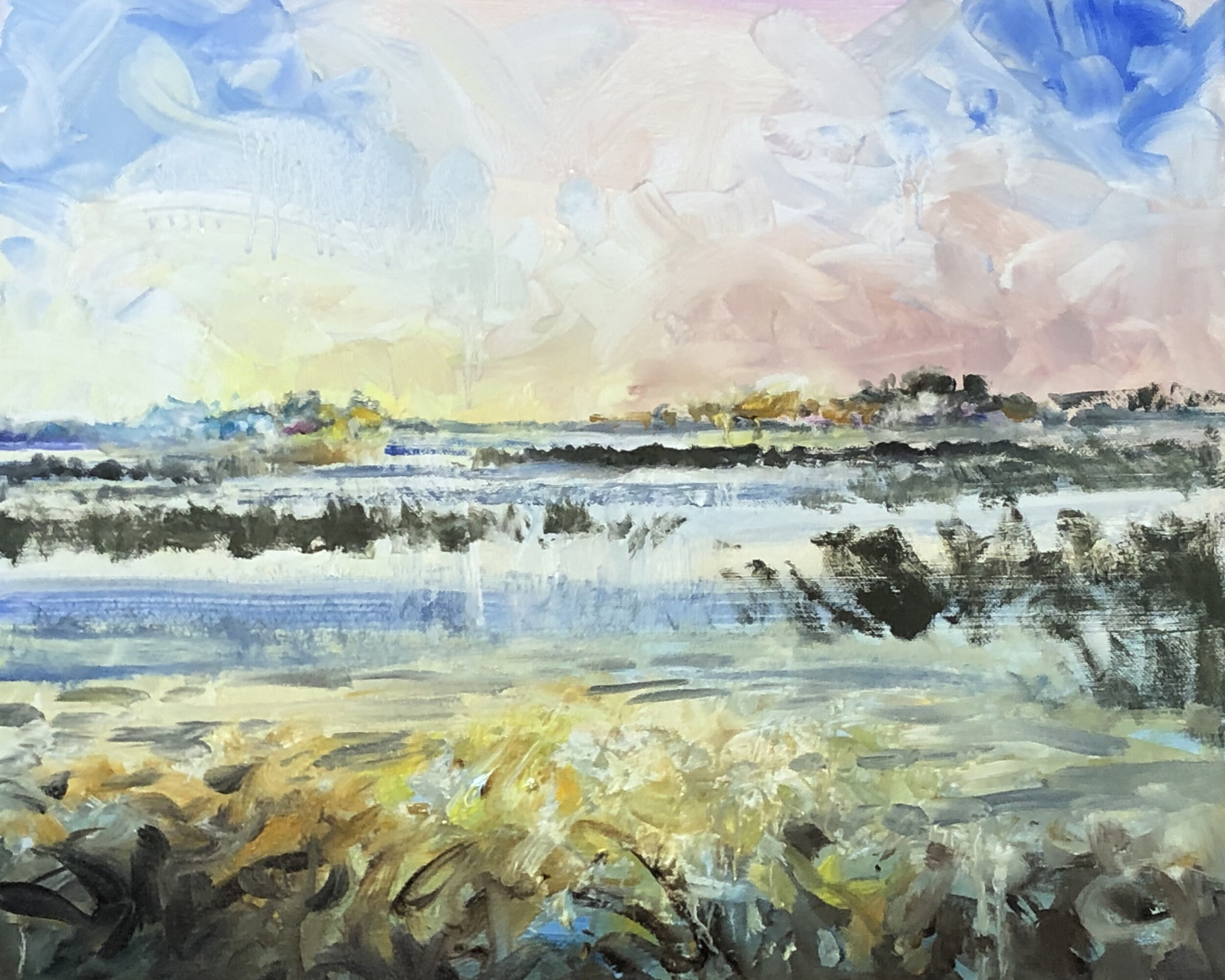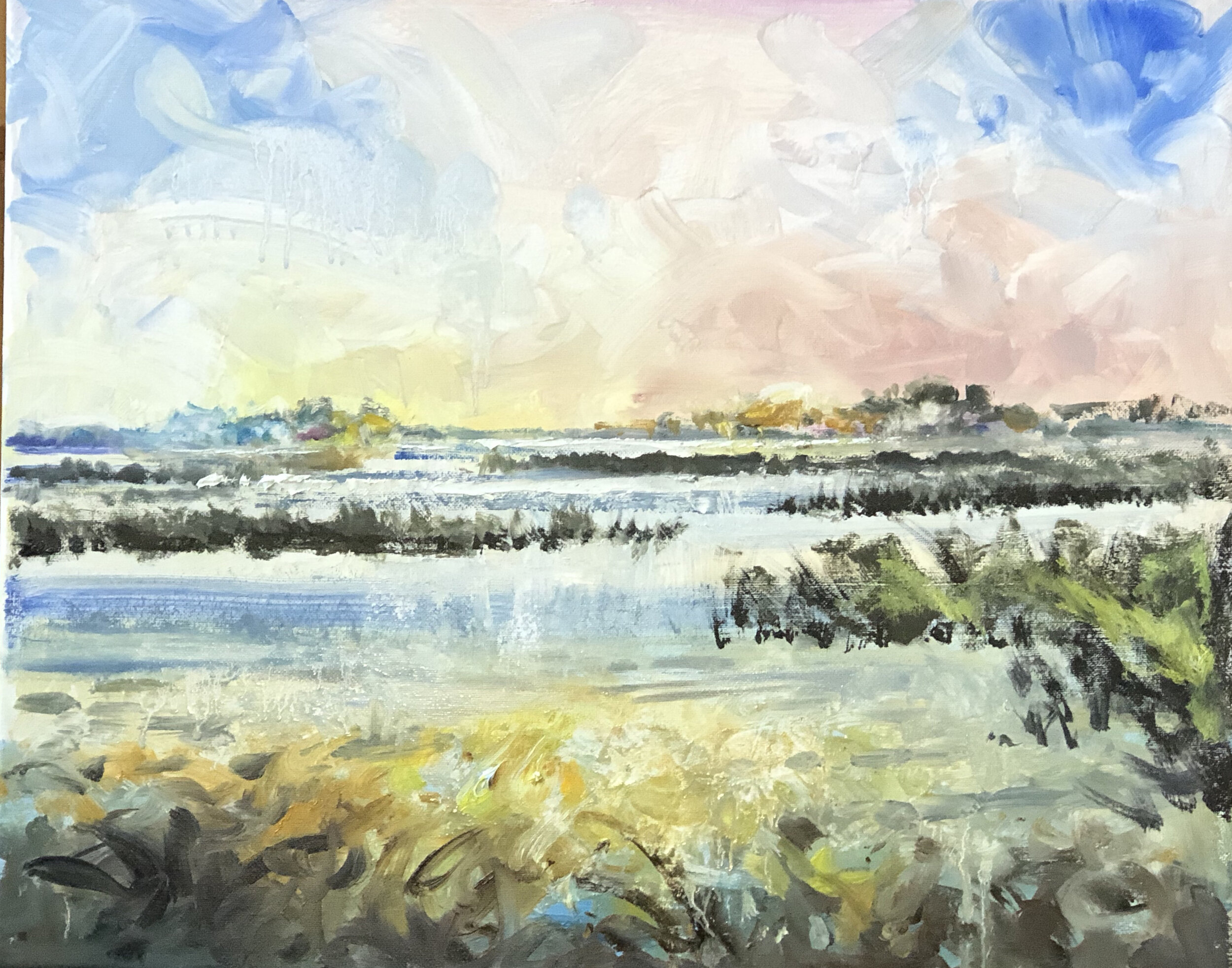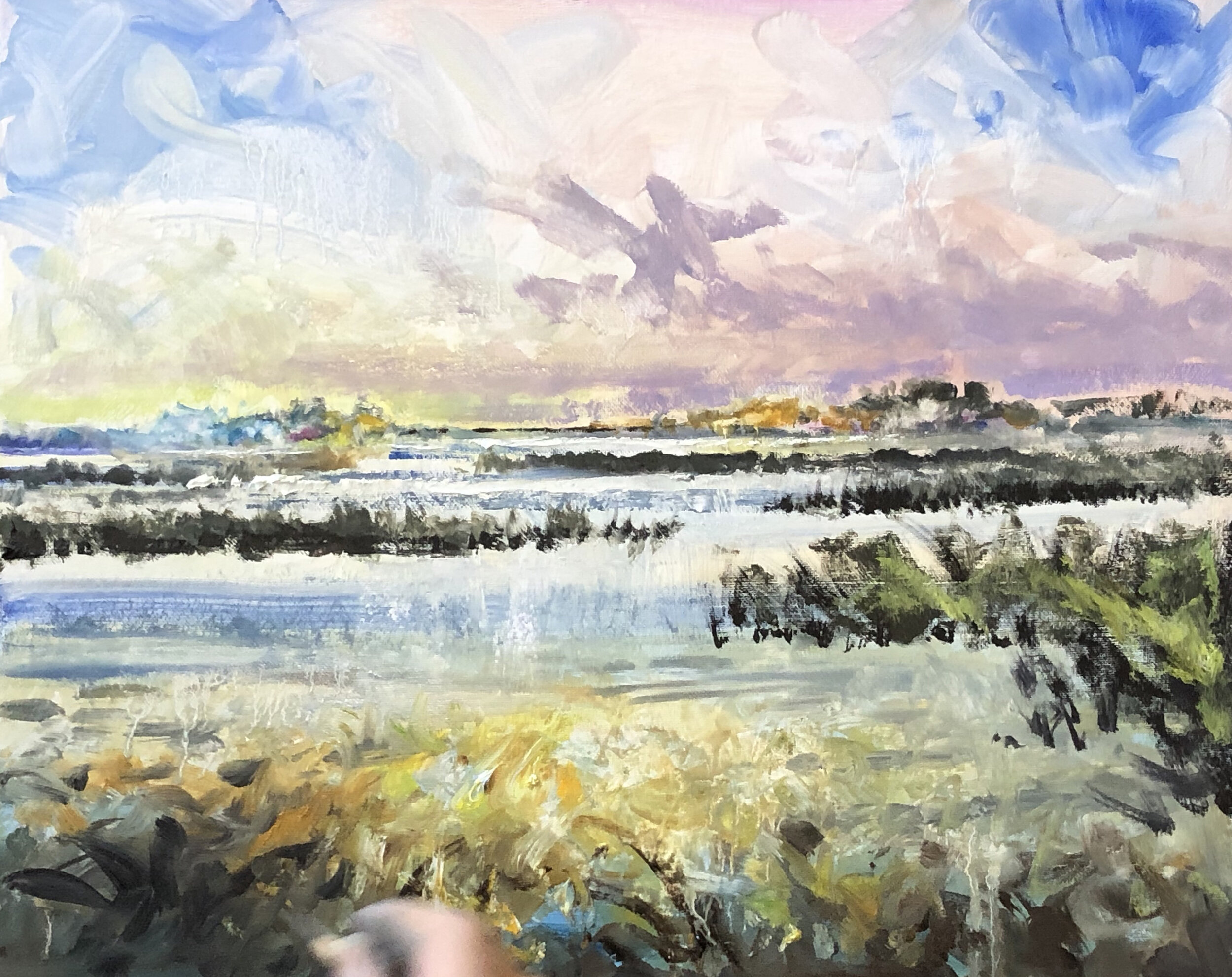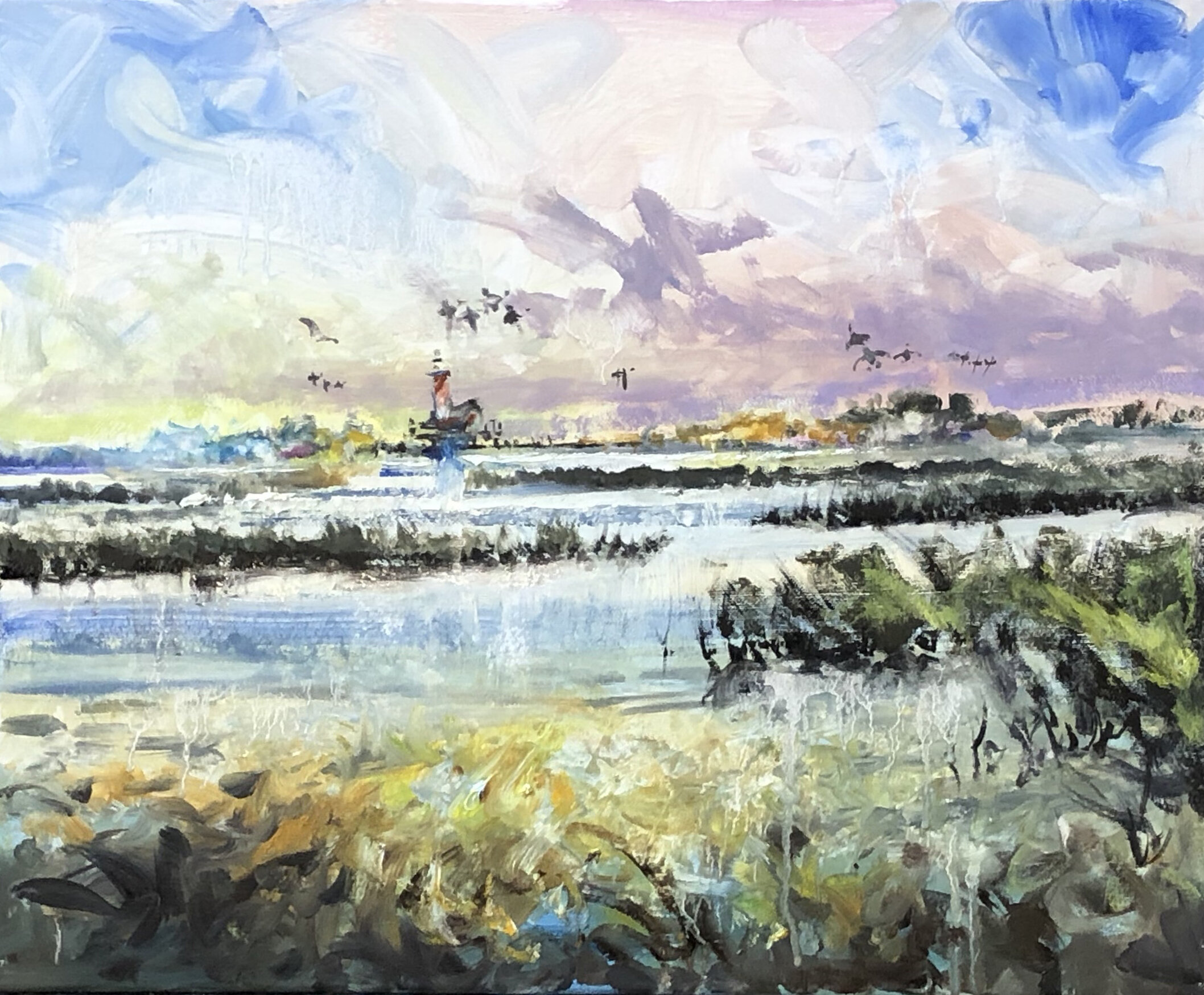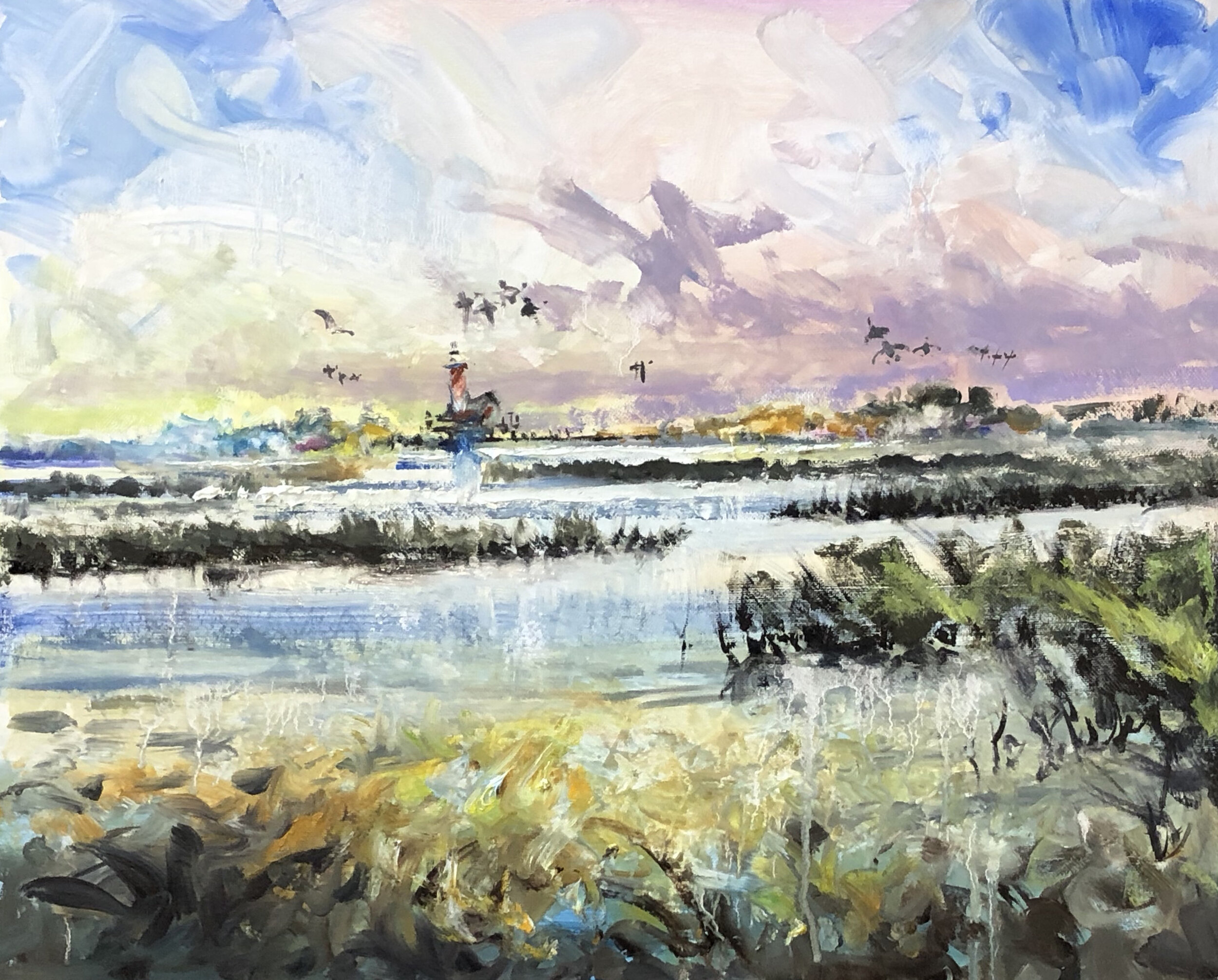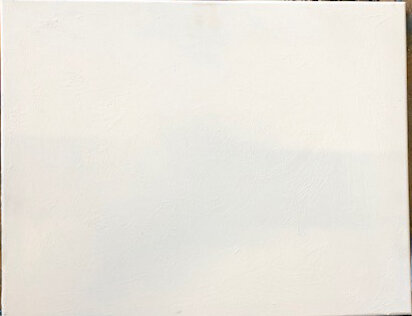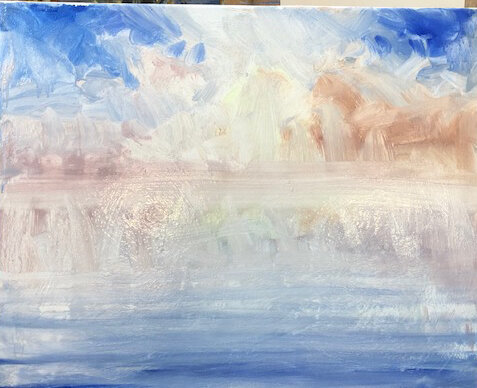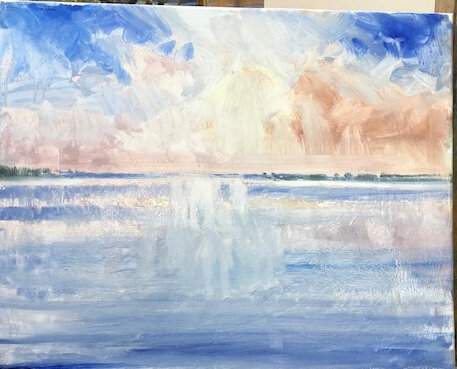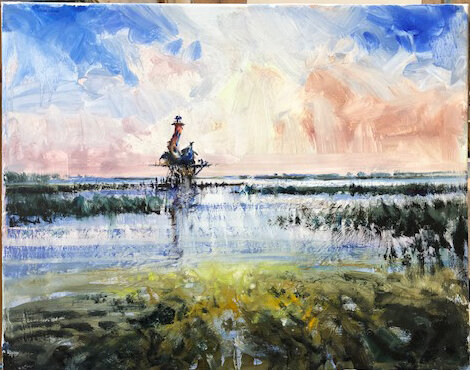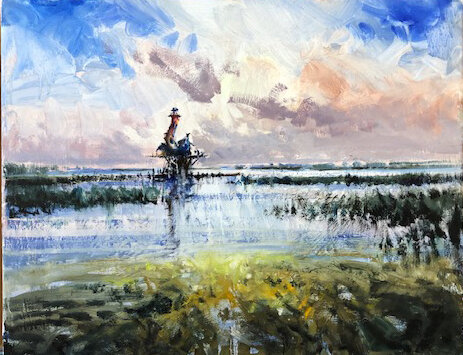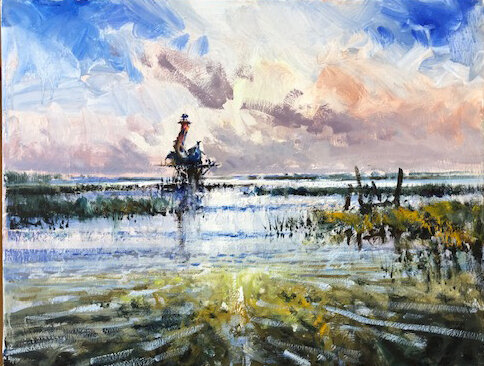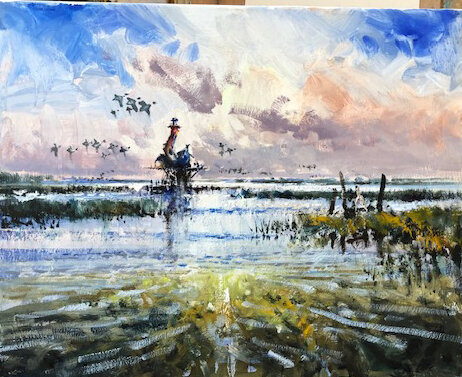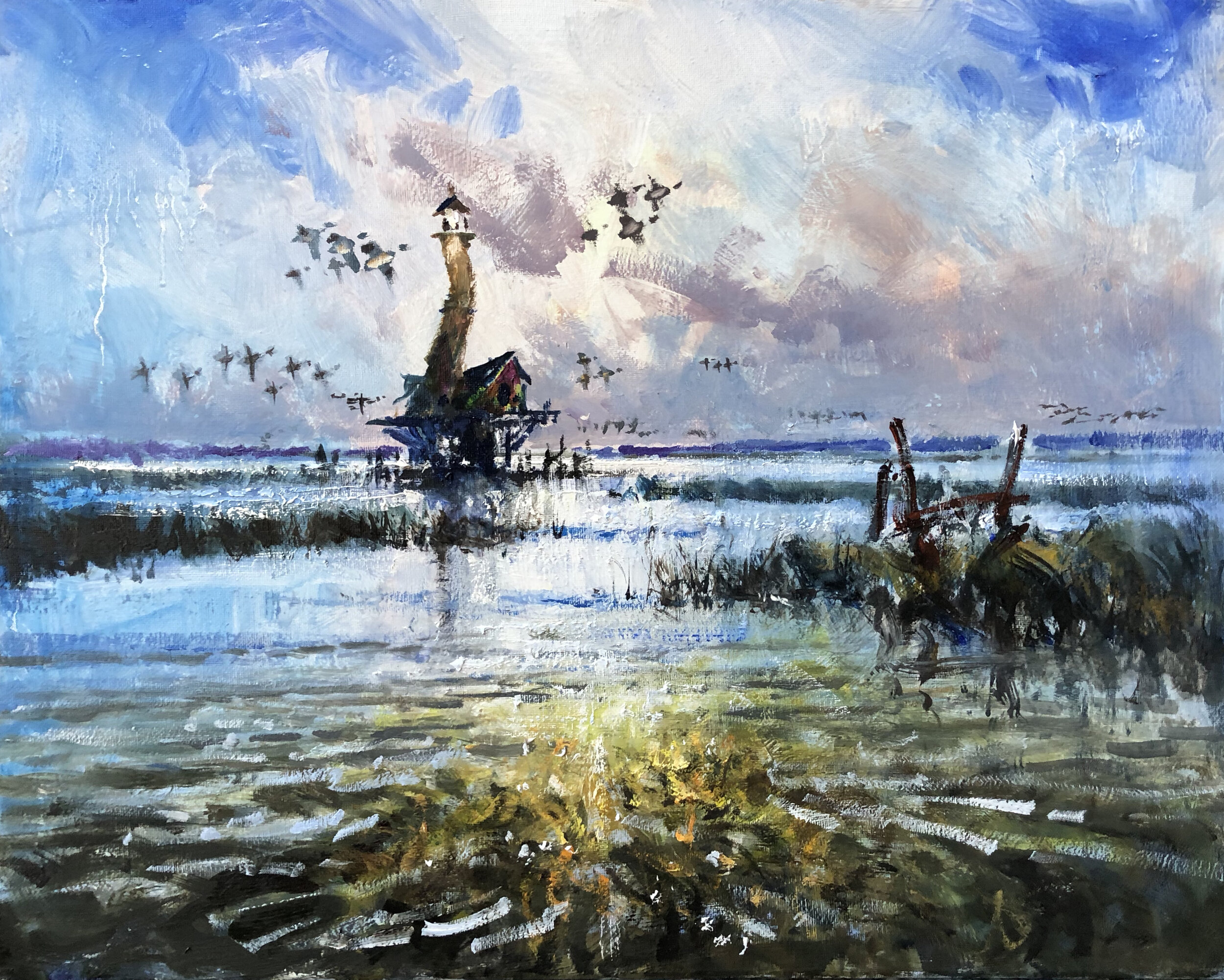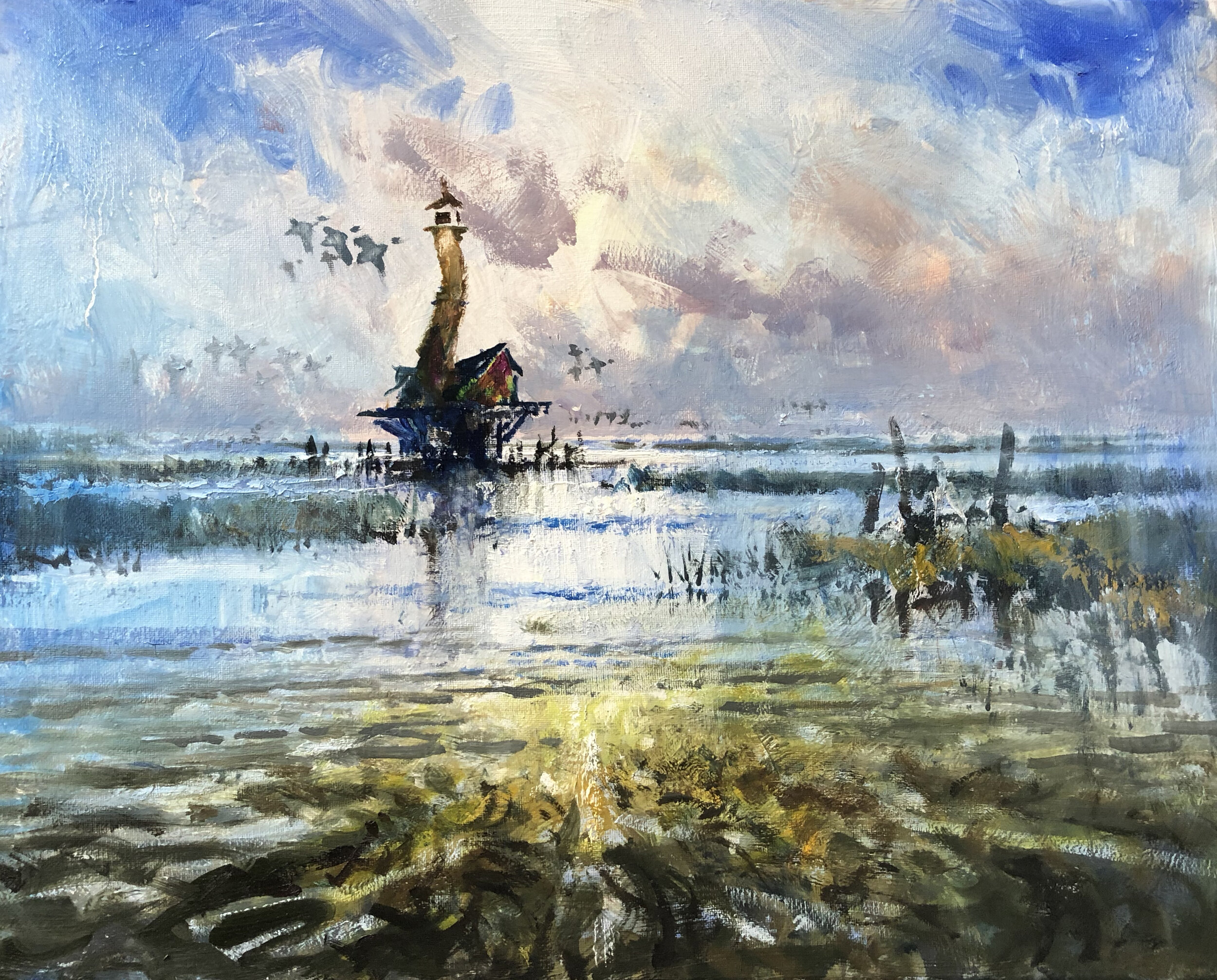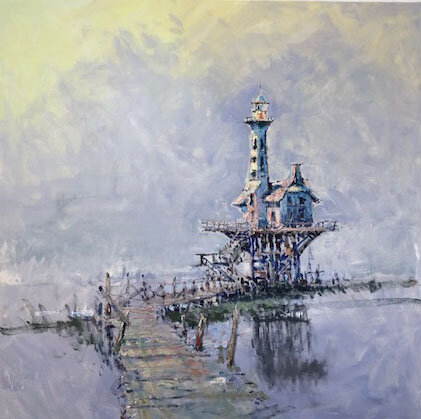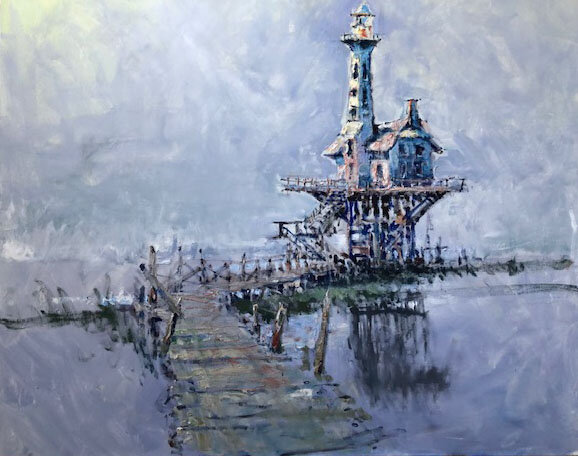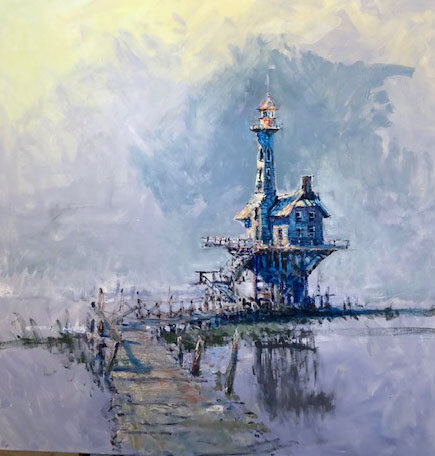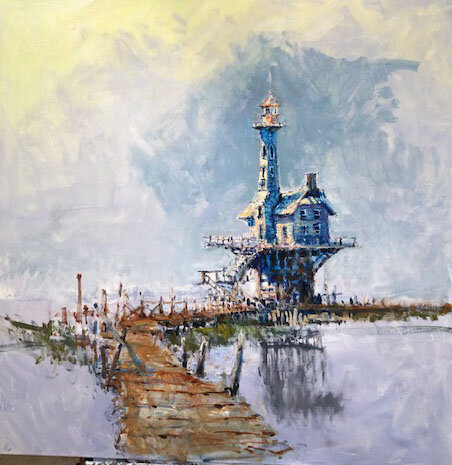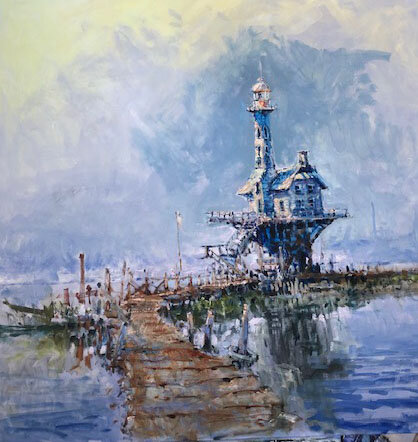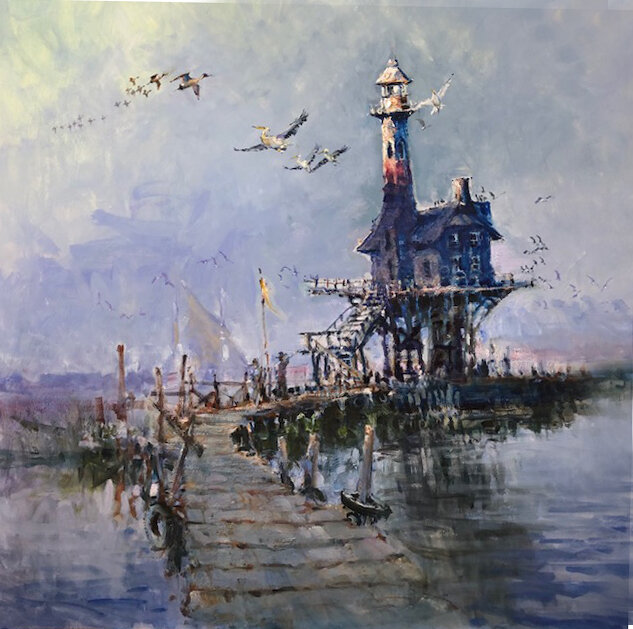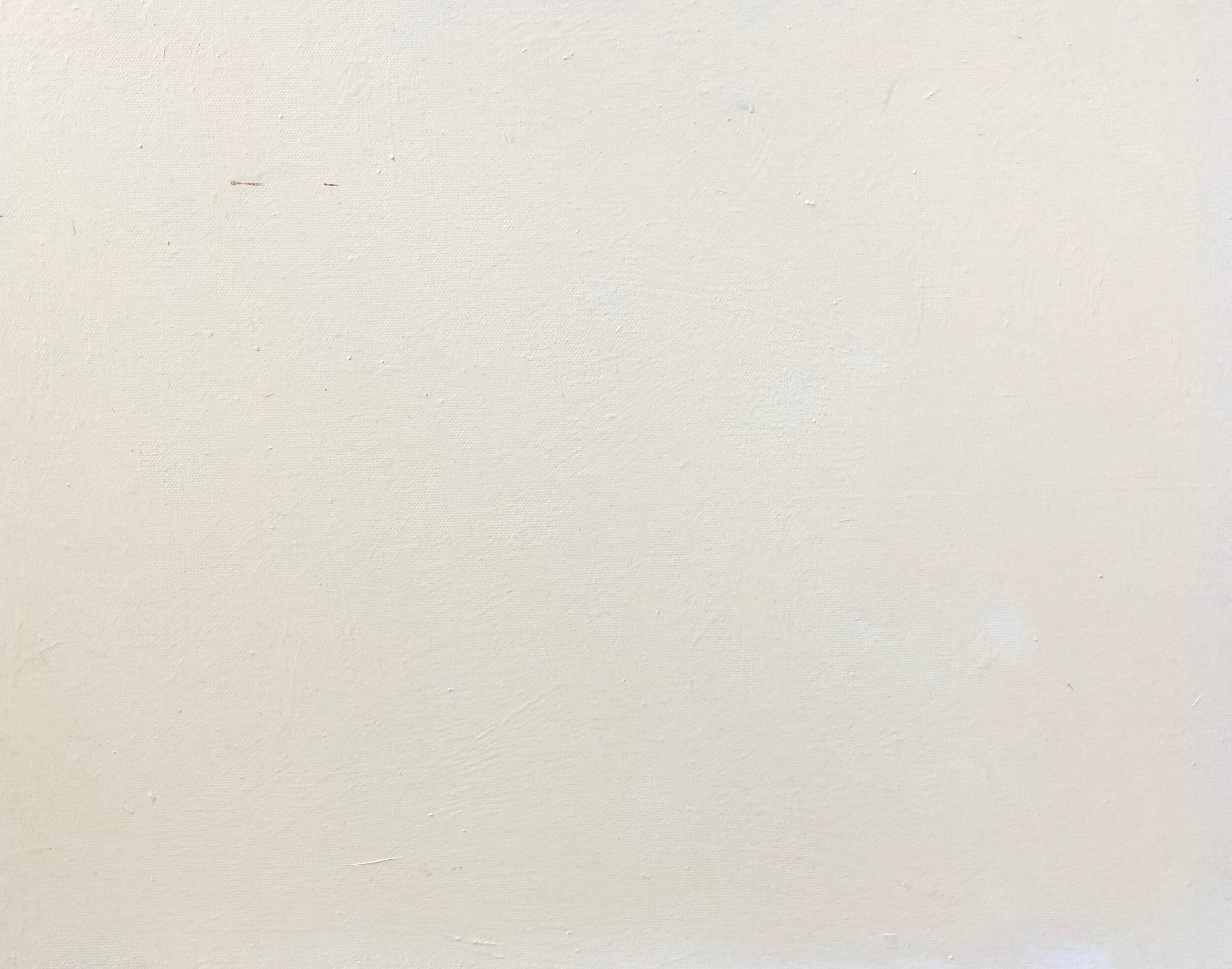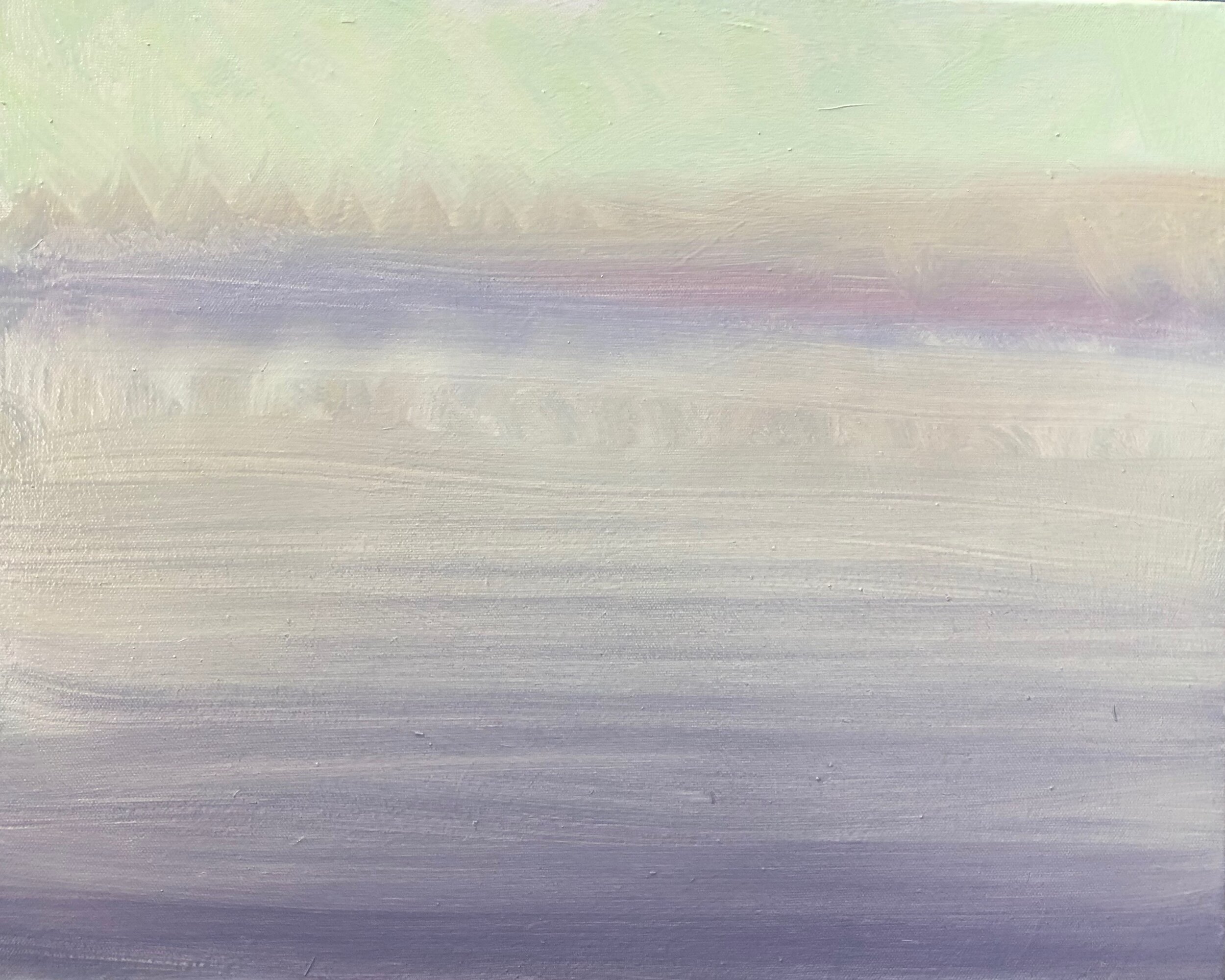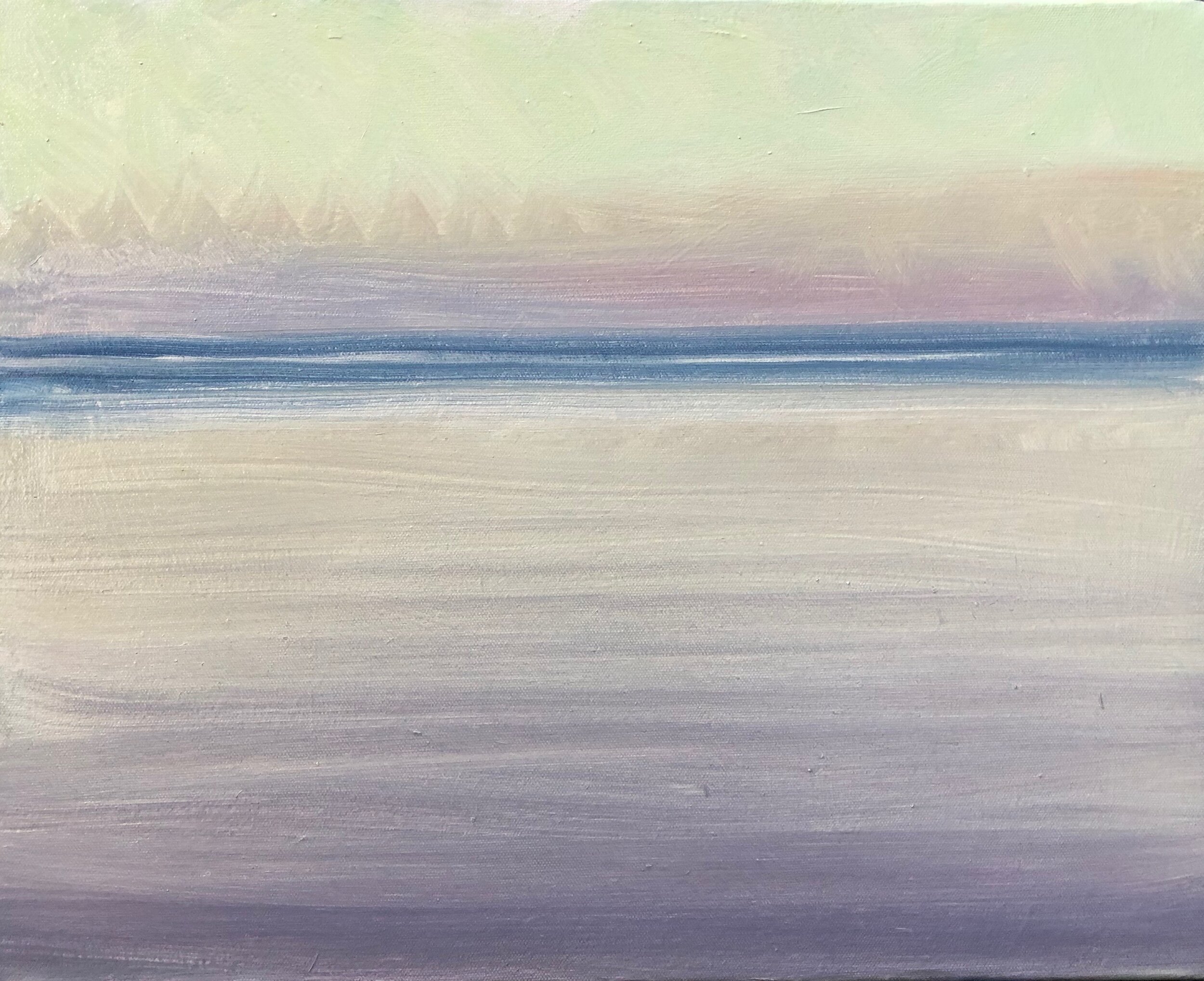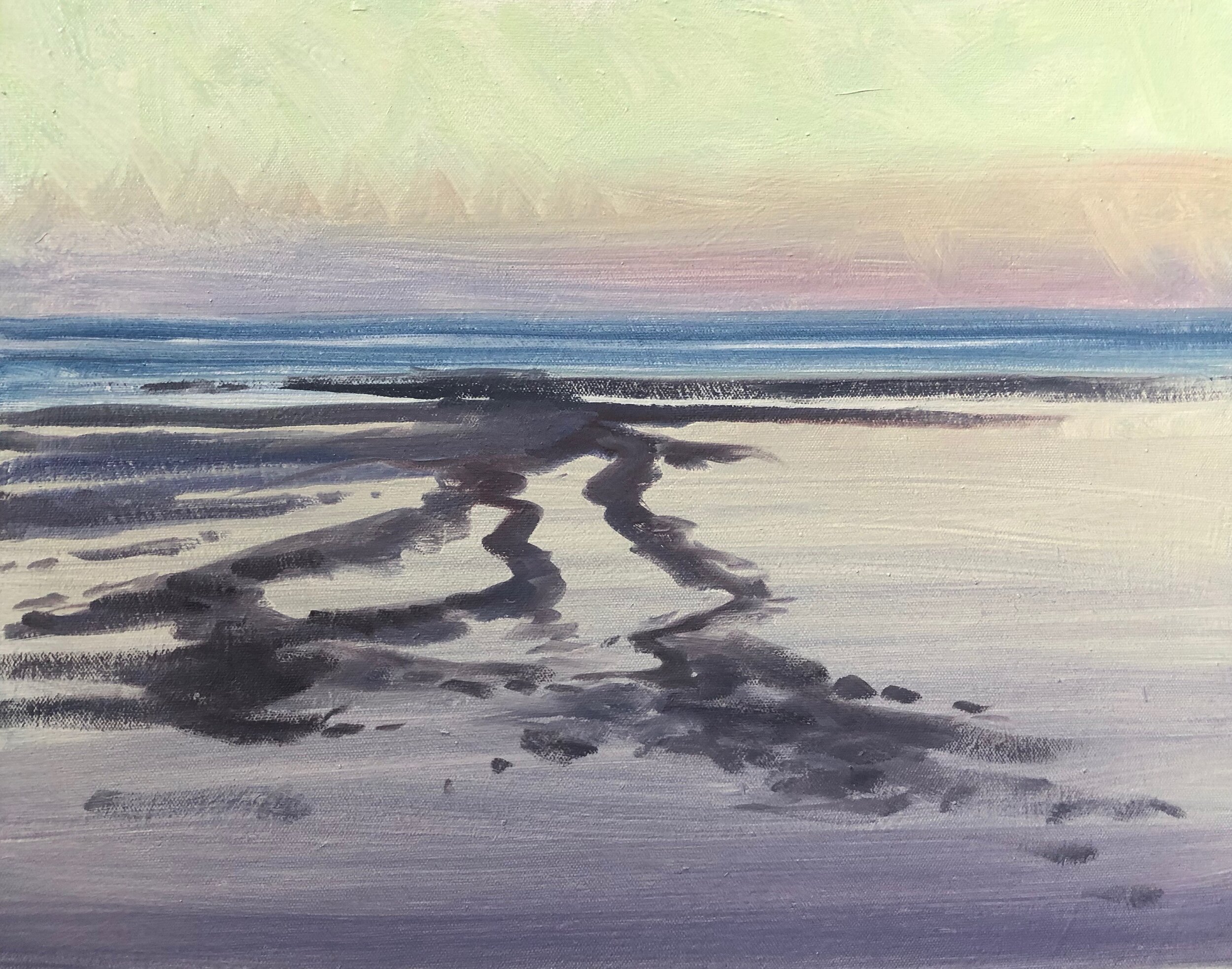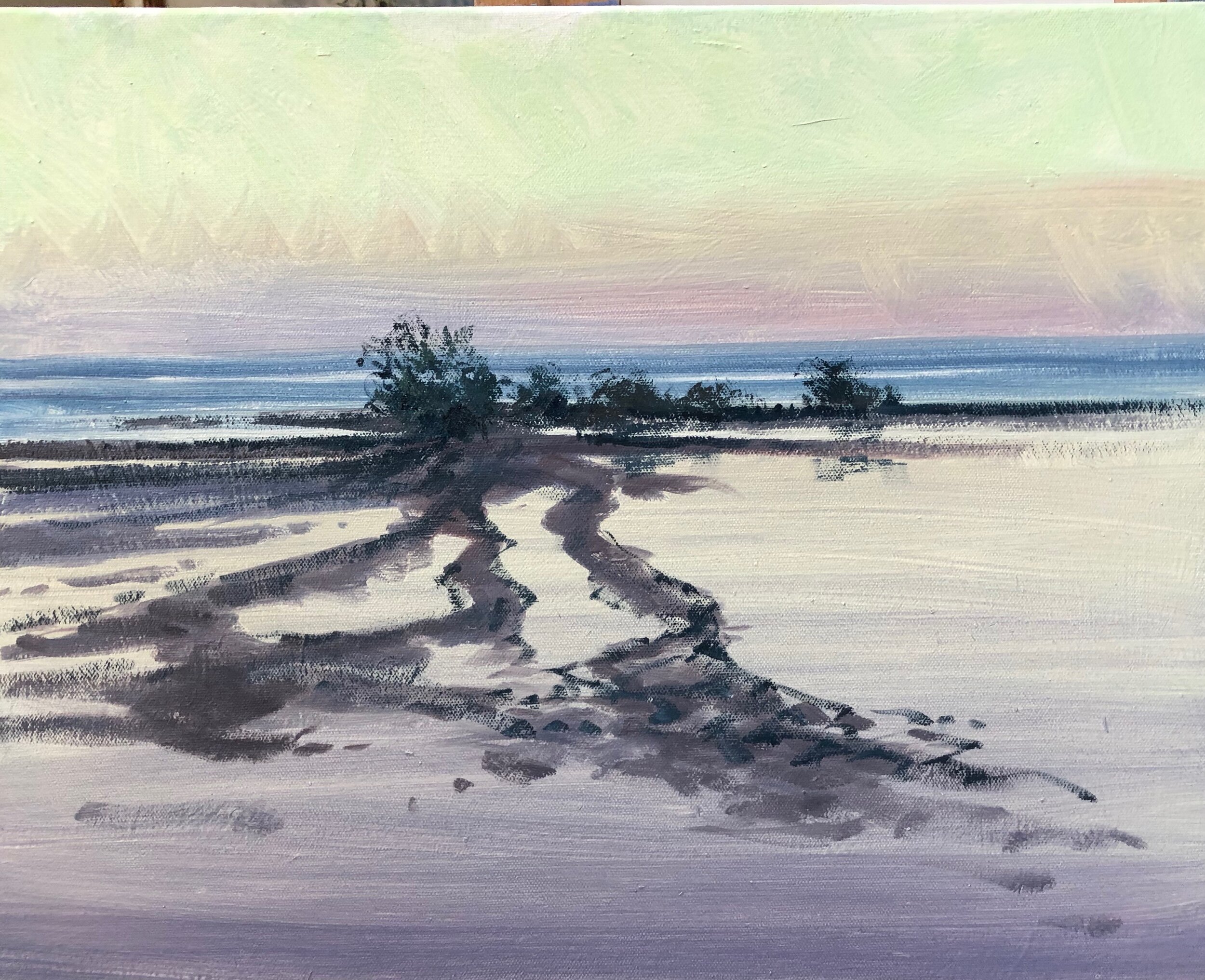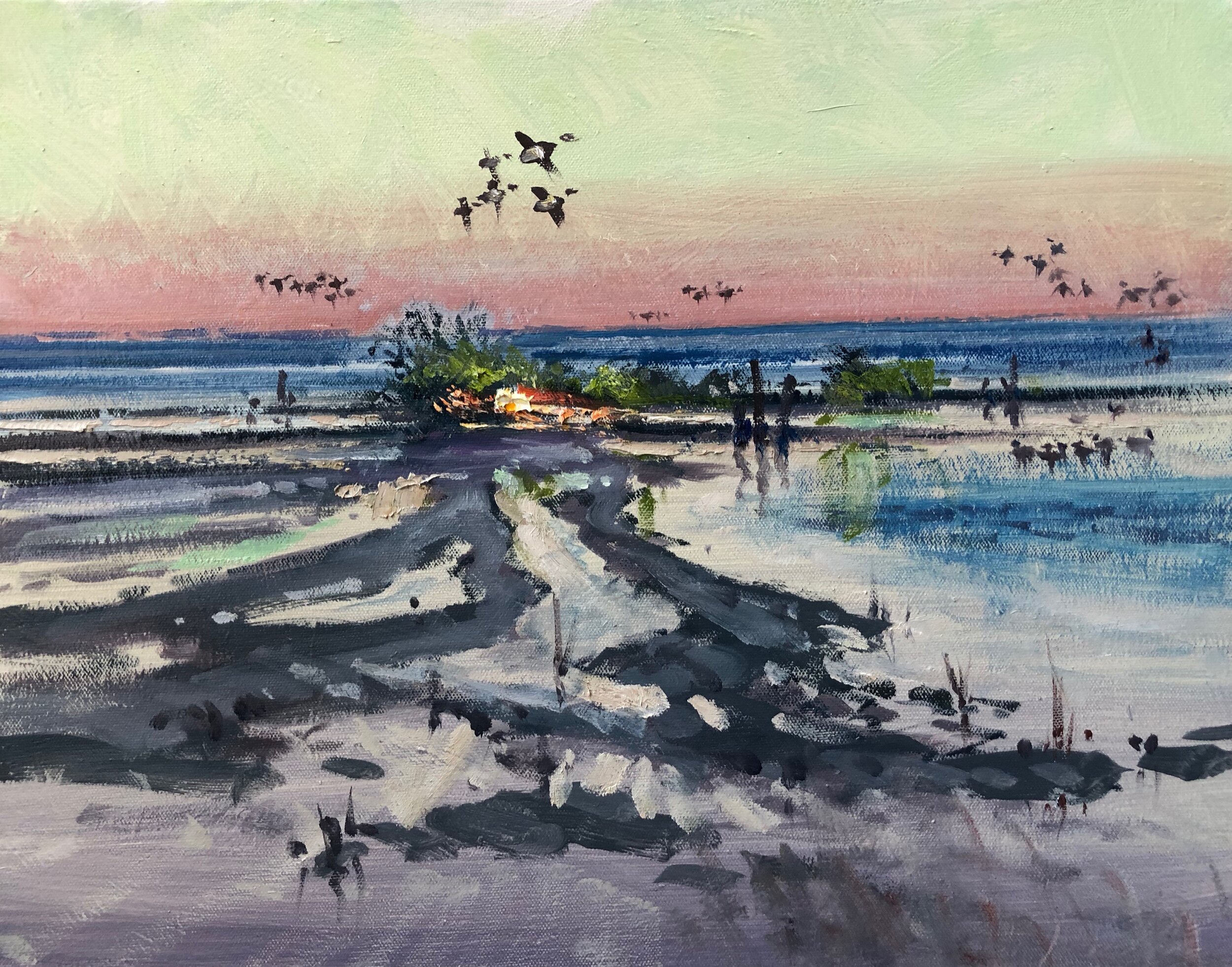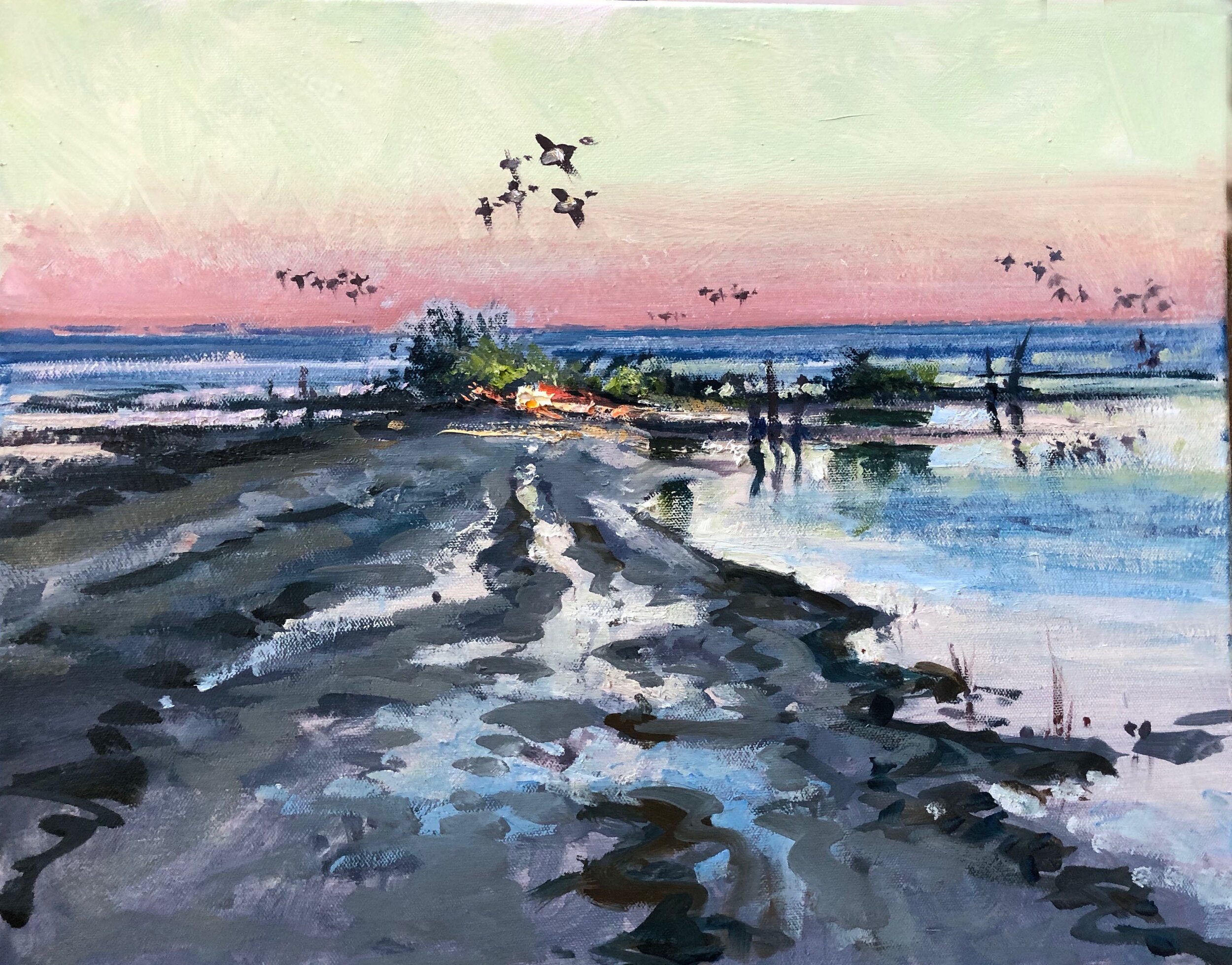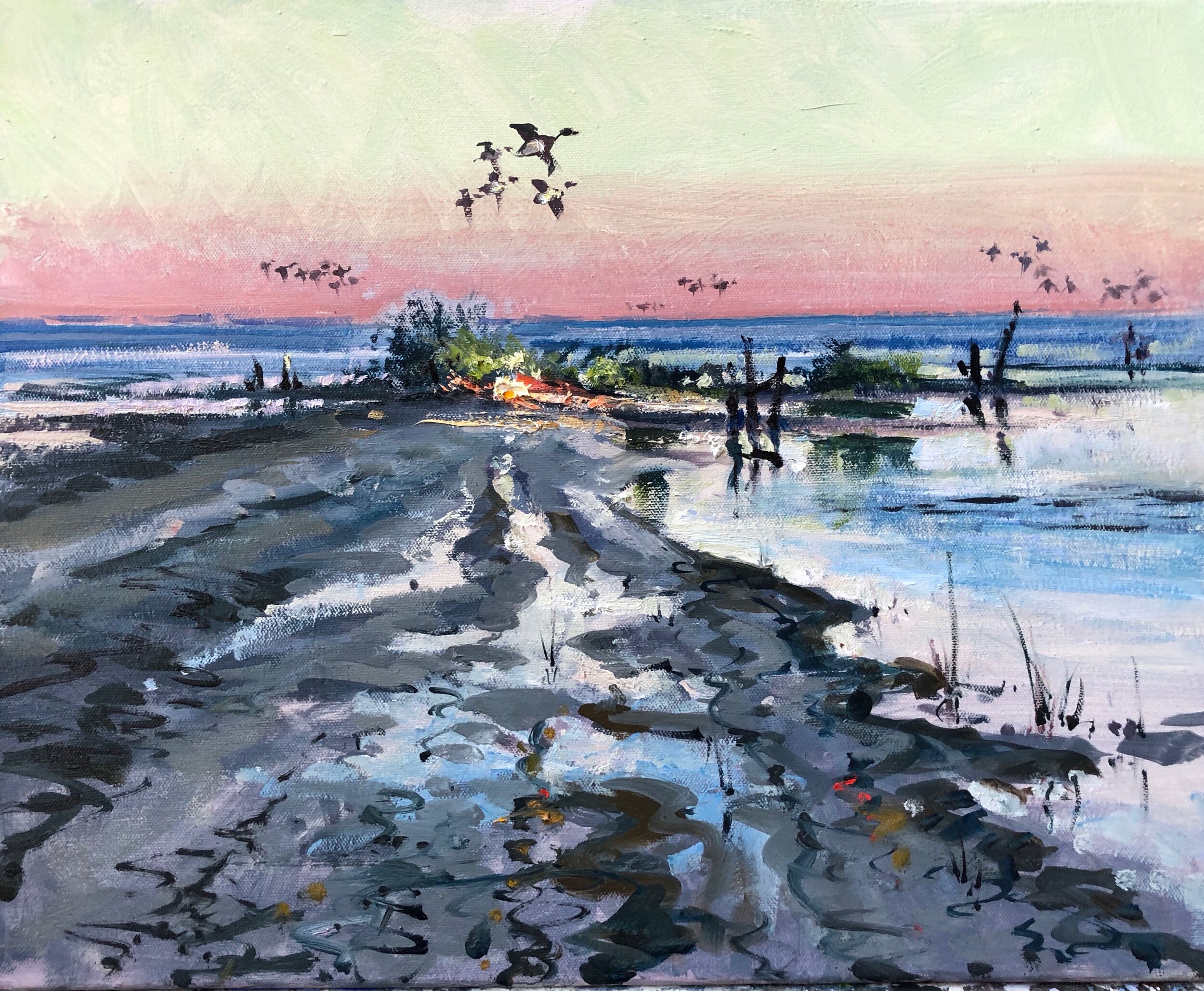Artist’s Statement: “Cultural Interface”
By Steve Russell
Growing up in Rockport, Texas, I was fascinated by the stories I read about the early inhabitants of the Live Oak Peninsula – the indigenous Native Americans often referred to locally as the Karankawa Indians. I often imagined what their life was like as they paddled their dugout canoes in the shallow bays, fishing, gathering shellfish and turtles, and living off the land. In the summers, my father, brothers and I would often build our own sailing craft and travel among the barrier islands, living, I imagined, much like these early inhabitants. As a young boy, I studied about them, their ways of hunting and fishing, the crafts and their beliefs and values. Sitting around campfires at night I tried to imagine their traditions and way of life, their knowledge of and reverence for the land and its resources; it inspired me in numerous attempts to learn more about practices such as stone tool making and foraging.
I was equally mesmerized by stories of the early Spanish and French explorers and settlers who sailed the oceans to discover new lands and peoples. Pirates, conquistadors, and ship captains also filled my dreams as I thought about what it must have been like to sail away from family and country on adventurous and dangerous voyages. One of my favorite books growing up told of how survivors from a Spanish shipwreck interacted with the Native Americans.
As I became an adult, my self-directed learning often focused on studying the archaeology, history and geology that impacted this region, its indigenous population and early residents. I am not a political person, but stories of the cultural upheaval that resulted from Europeans exploration and settlements naturally impacted me. Once I became an artist, these narratives became a part of my imagery in the many landscapes I made. I have created paintings that aim to recreate what I think it must have looked like when the Karankawas roamed through along the coast. I also painted hundreds of sailing vessels tossed on the dramatic waves. And, I also pictured what I imagined might have been the first sightings by the natives of explorers, missionaries and others.
As an artist, I attempt to mark visually that for which there is no photograph, no physical trace, other than shards of pottery, tools, jewelry or other archeological evidence. And, as in my paintings, my design for a series of bronze sculptures, which I’ve called “Cultural Interface,” is my creative take on what might have been one of the most significant moments in our coastal history.
I’m not one of those artists who waxes poetic about symbols, meanings and metaphors in my work, nor do I have a political position to express artistically. I hope that each viewer will bring their own experience and viewpoint to experiencing what I’ve created. With “Cultural Interface,” my intent is to transport the viewer to a moment in time and allow them to reflect on the beauty of the Little Bay surrounding the sculptures…the sky and water and landscape. And, to imagine another time in our history and consider that interaction or interface in relation to our current lives and times.




